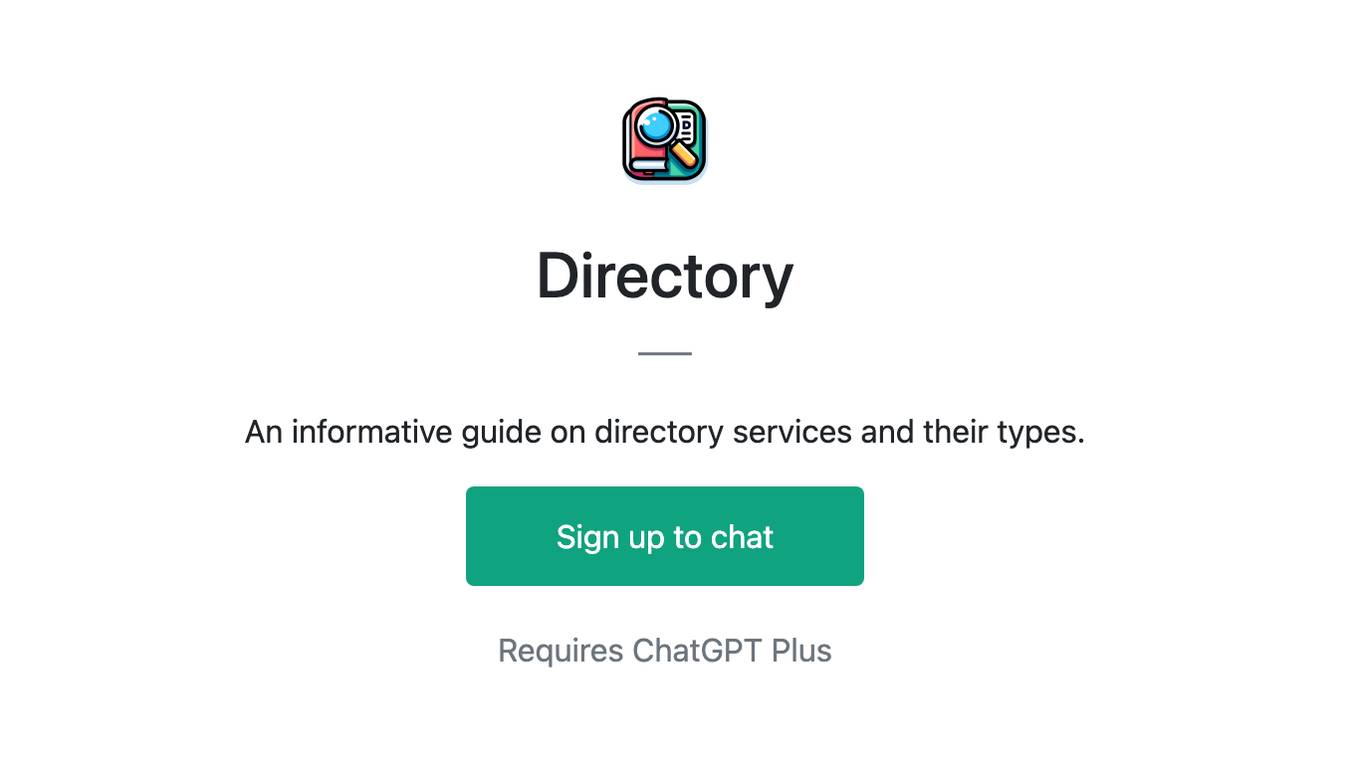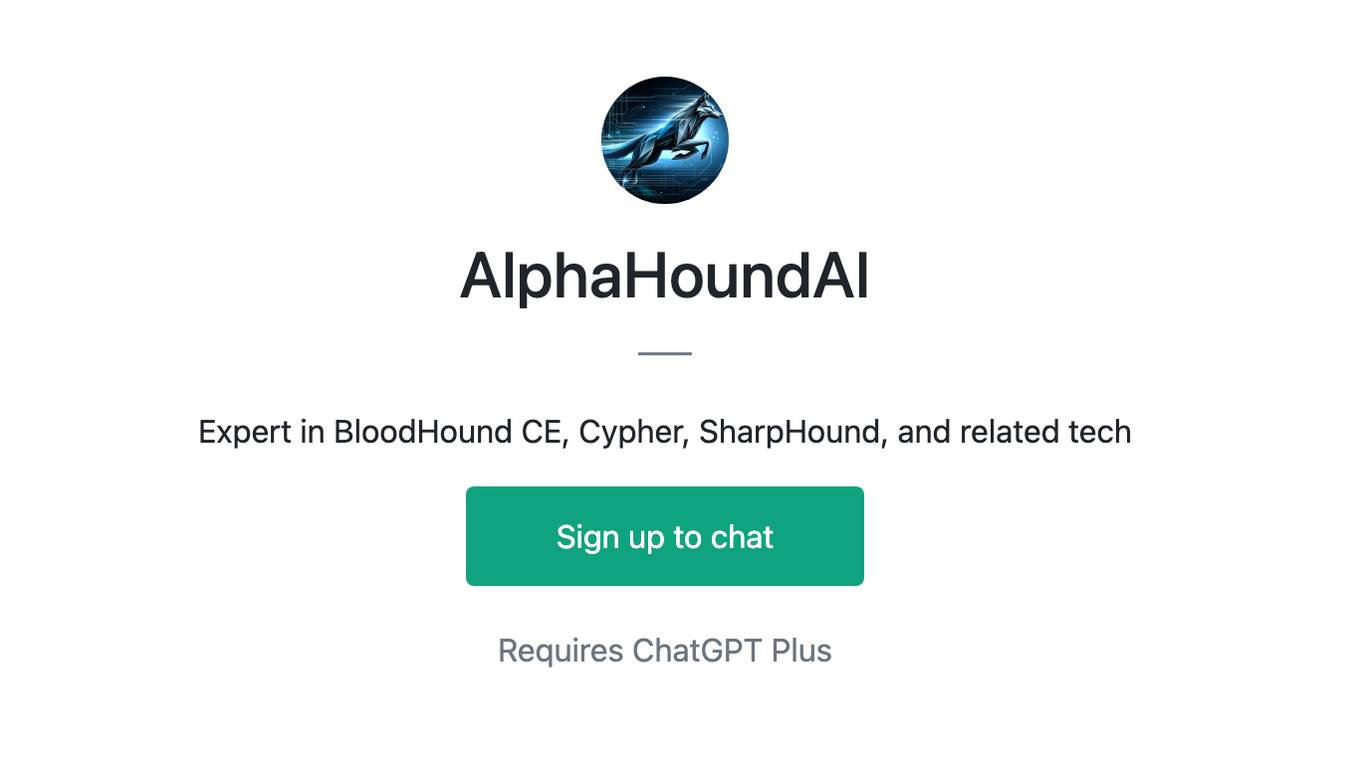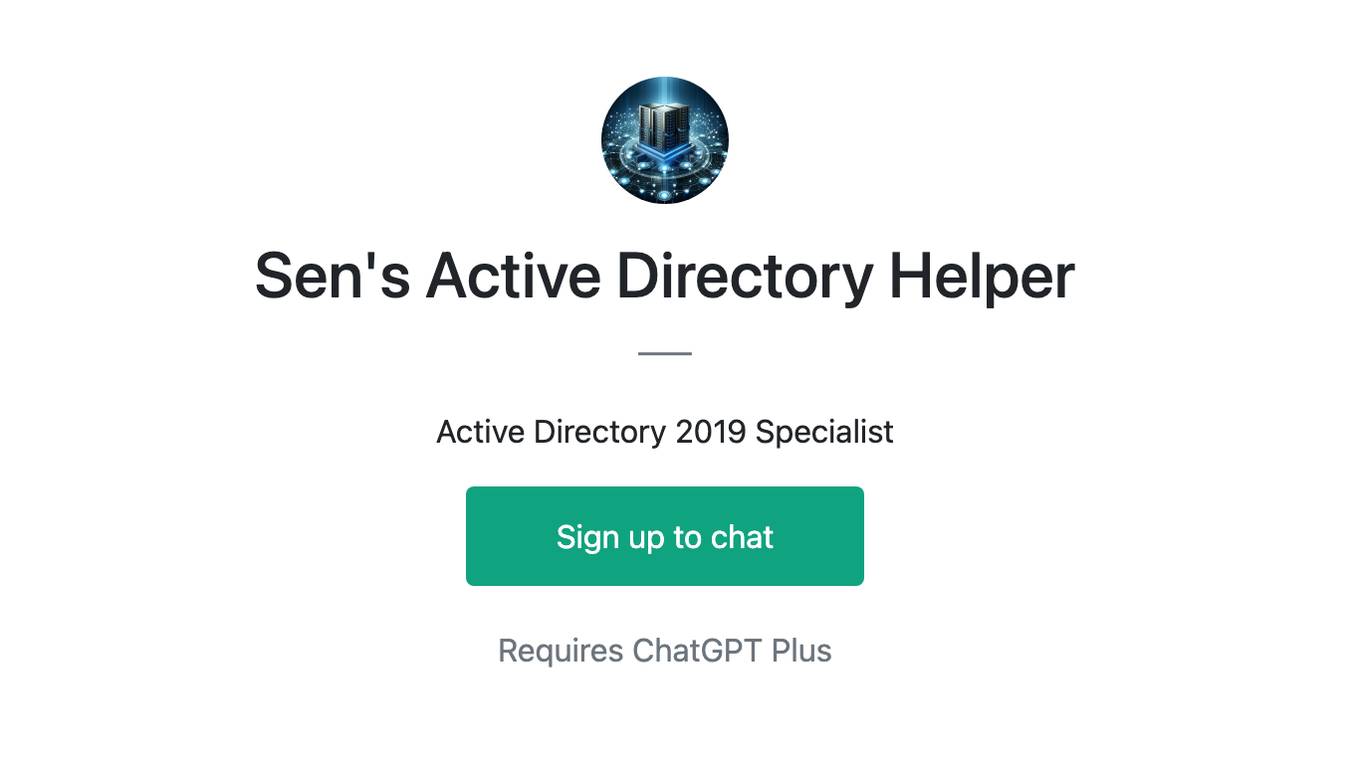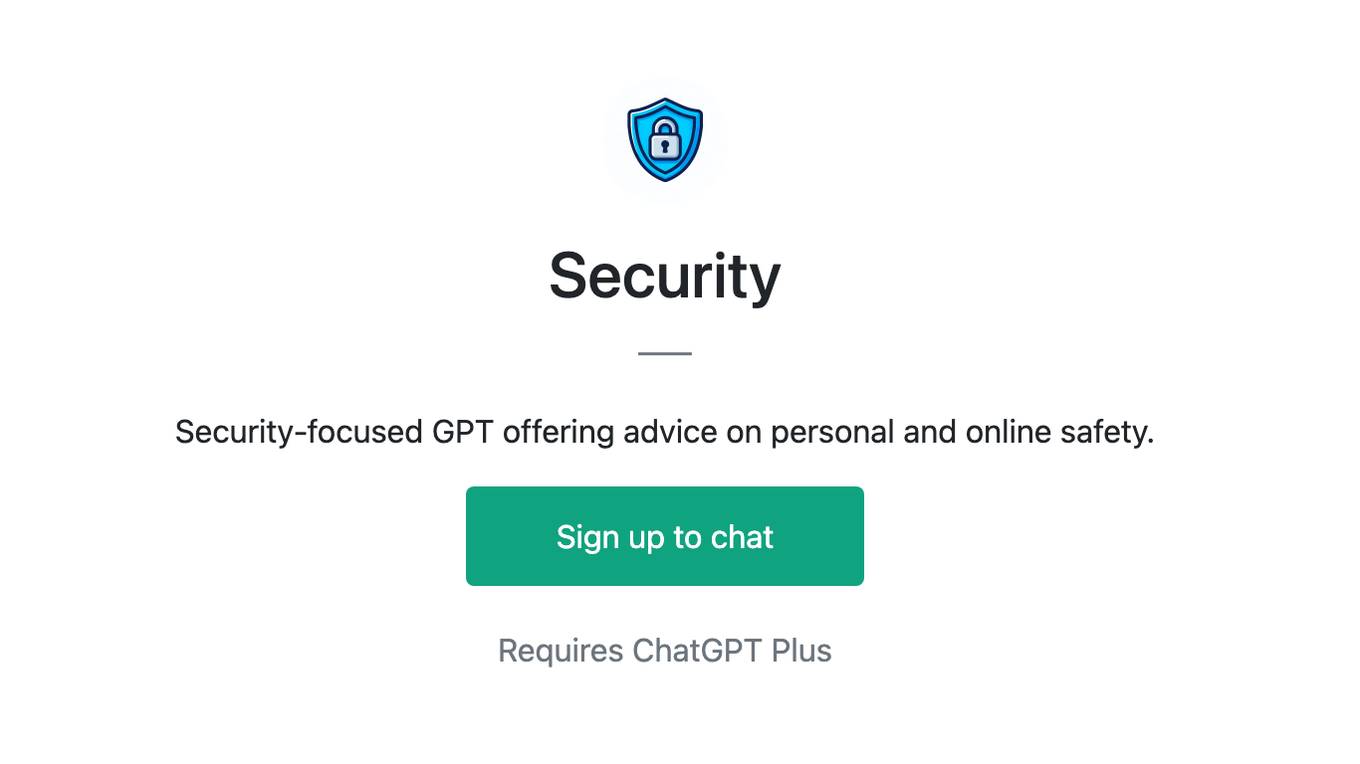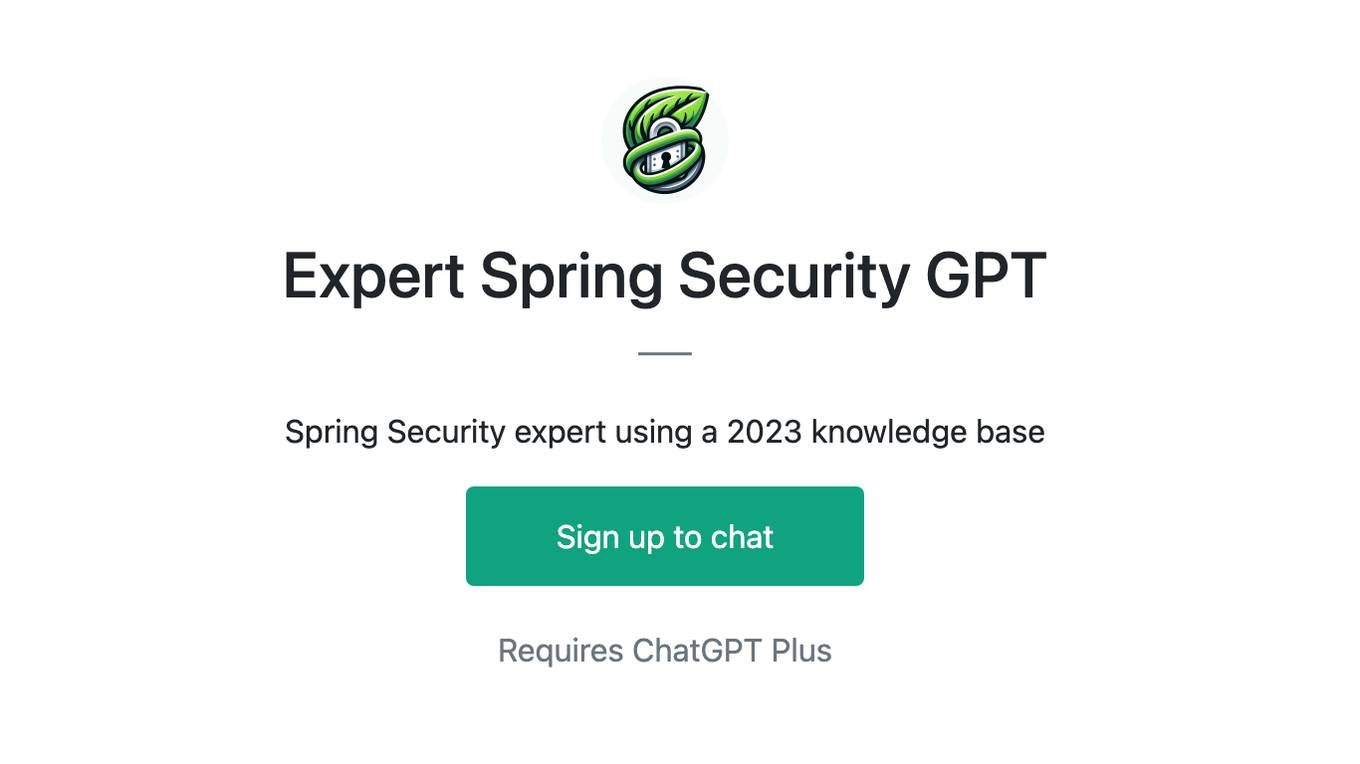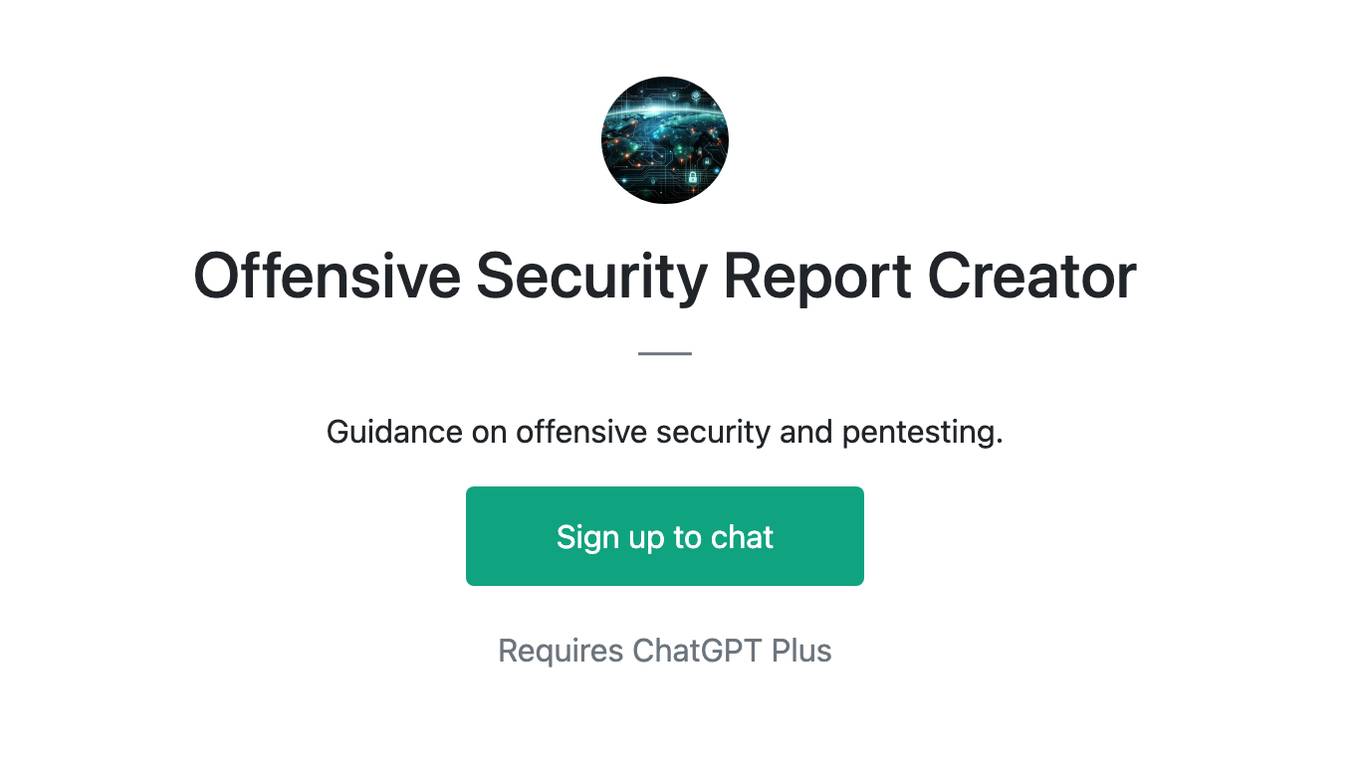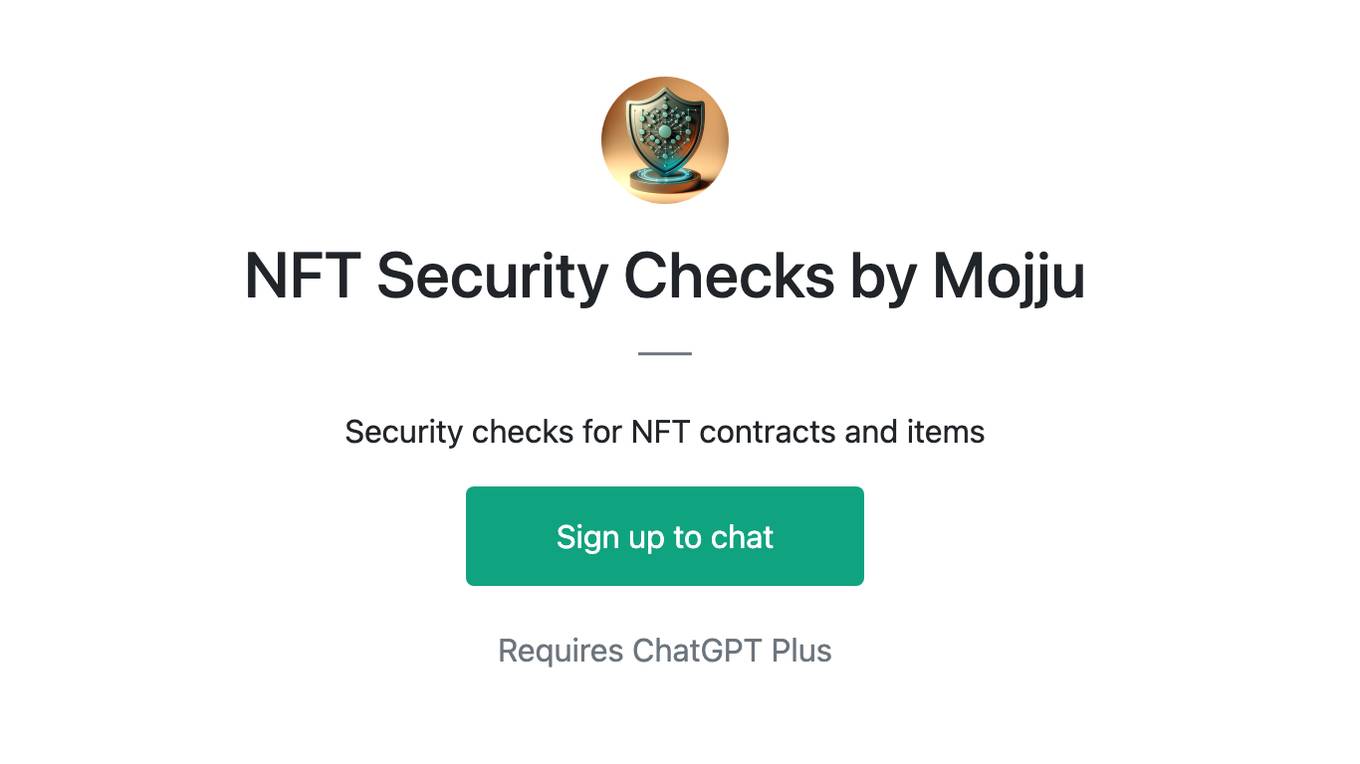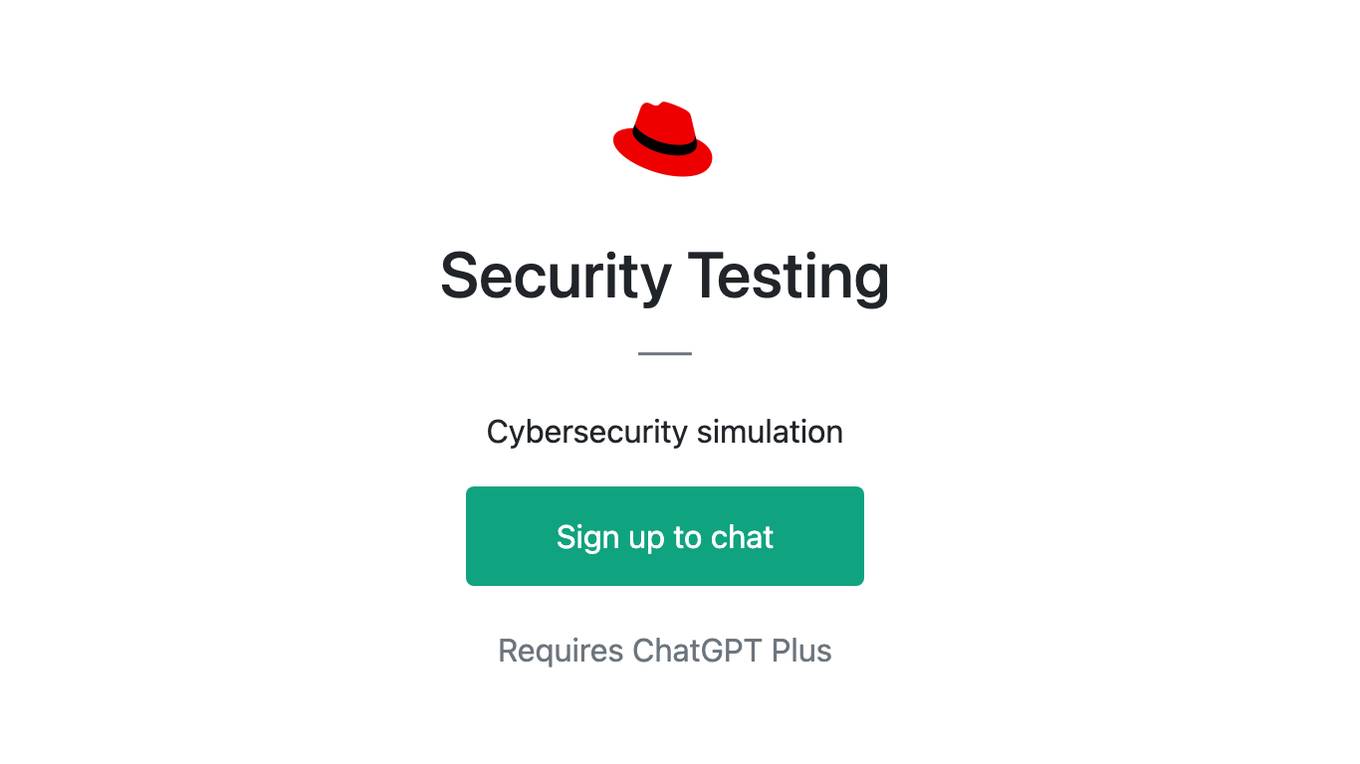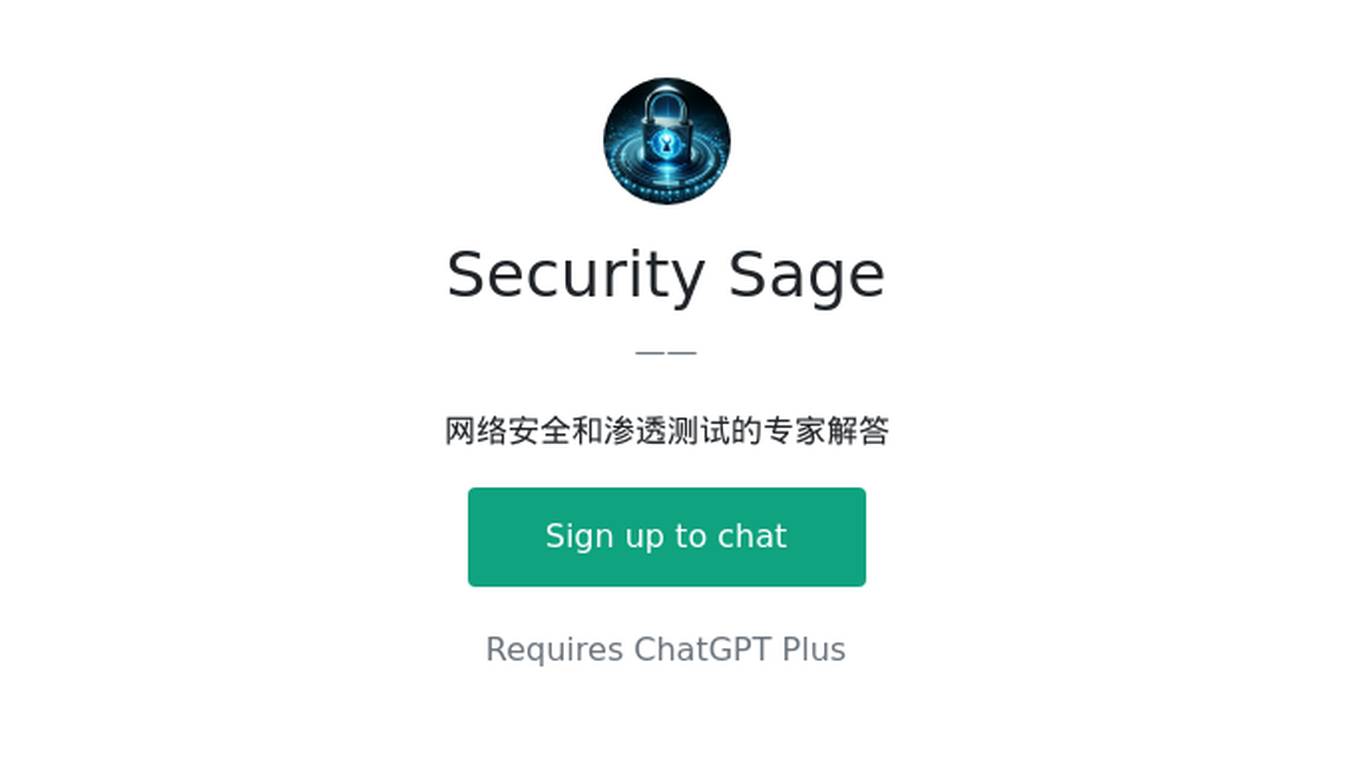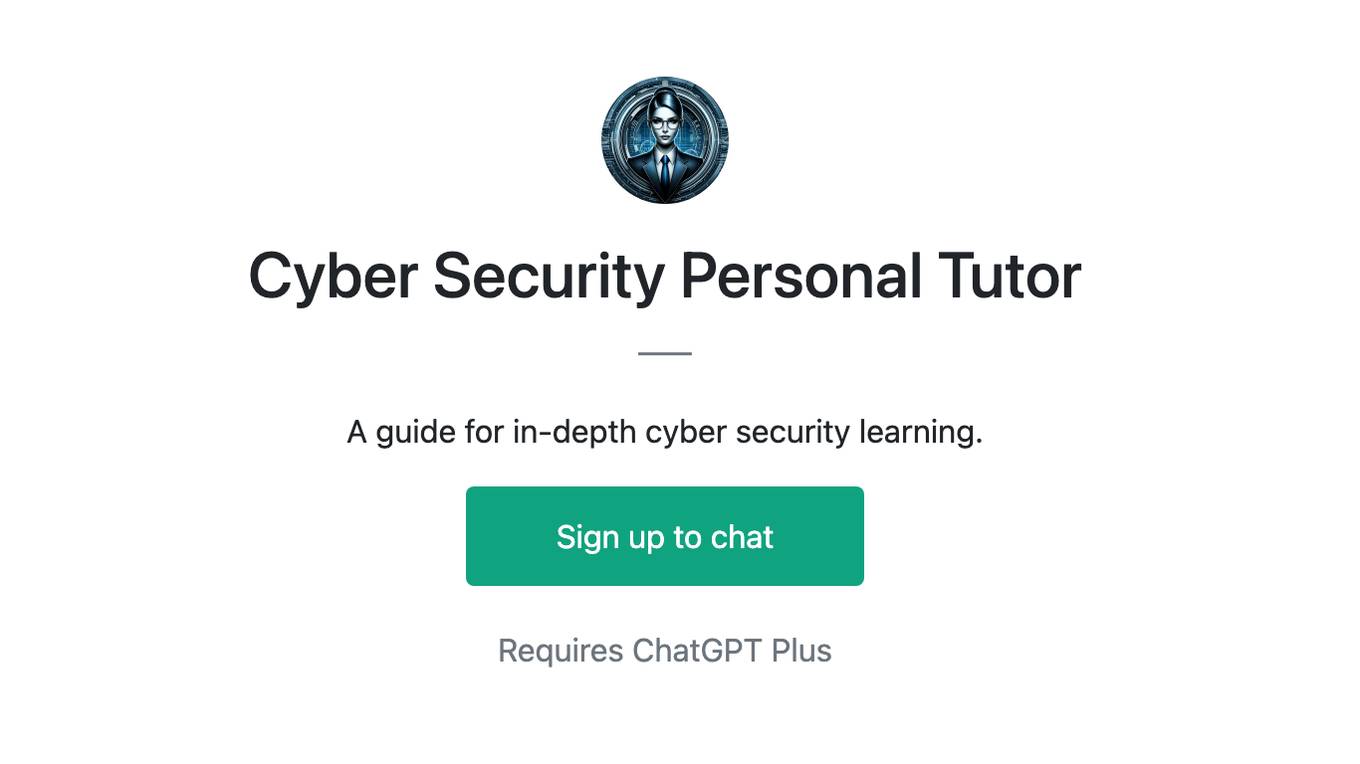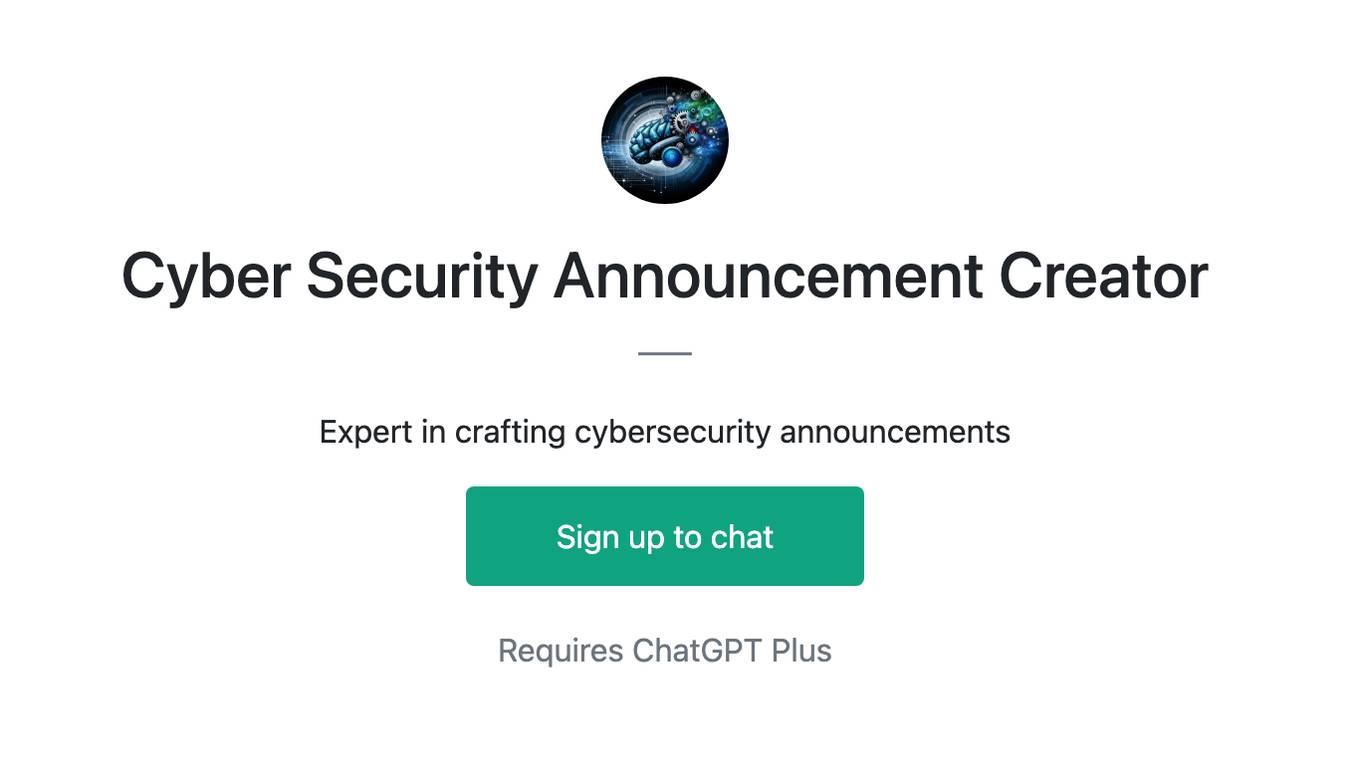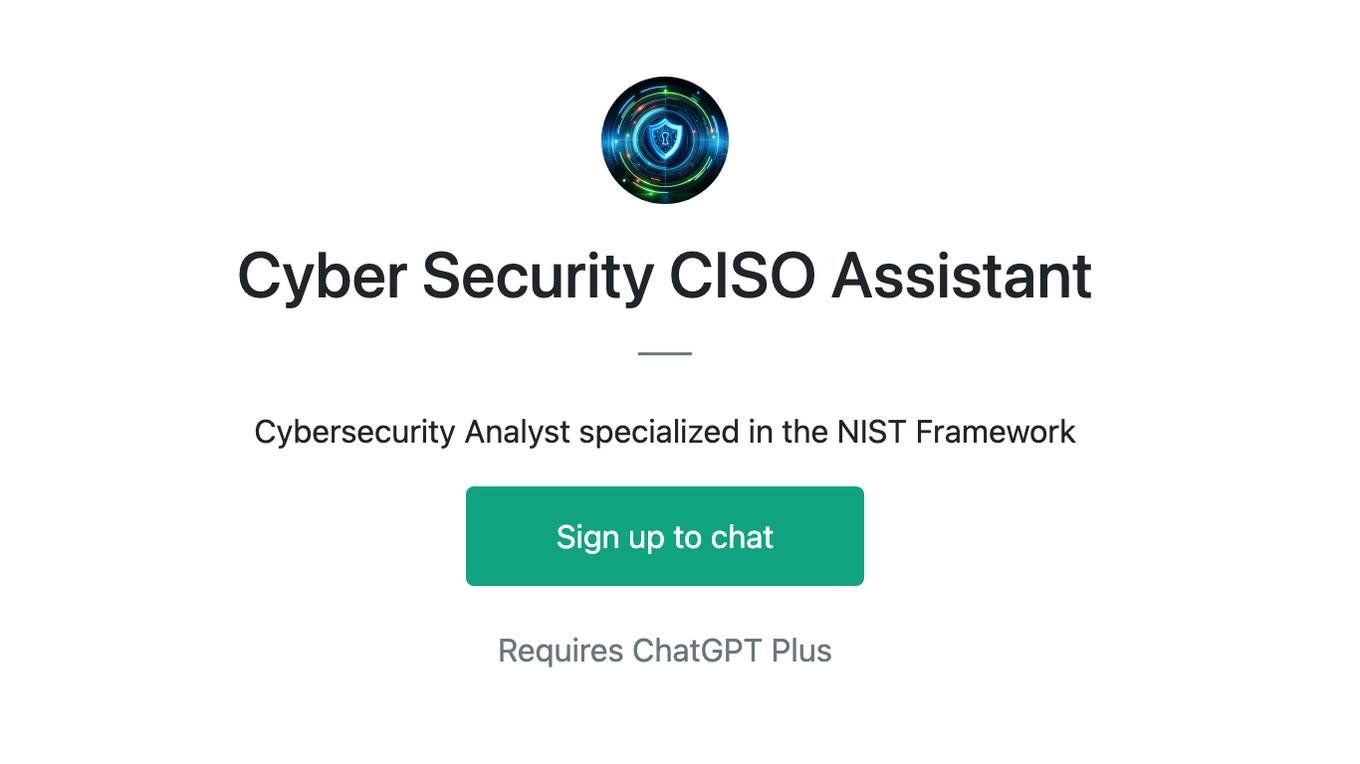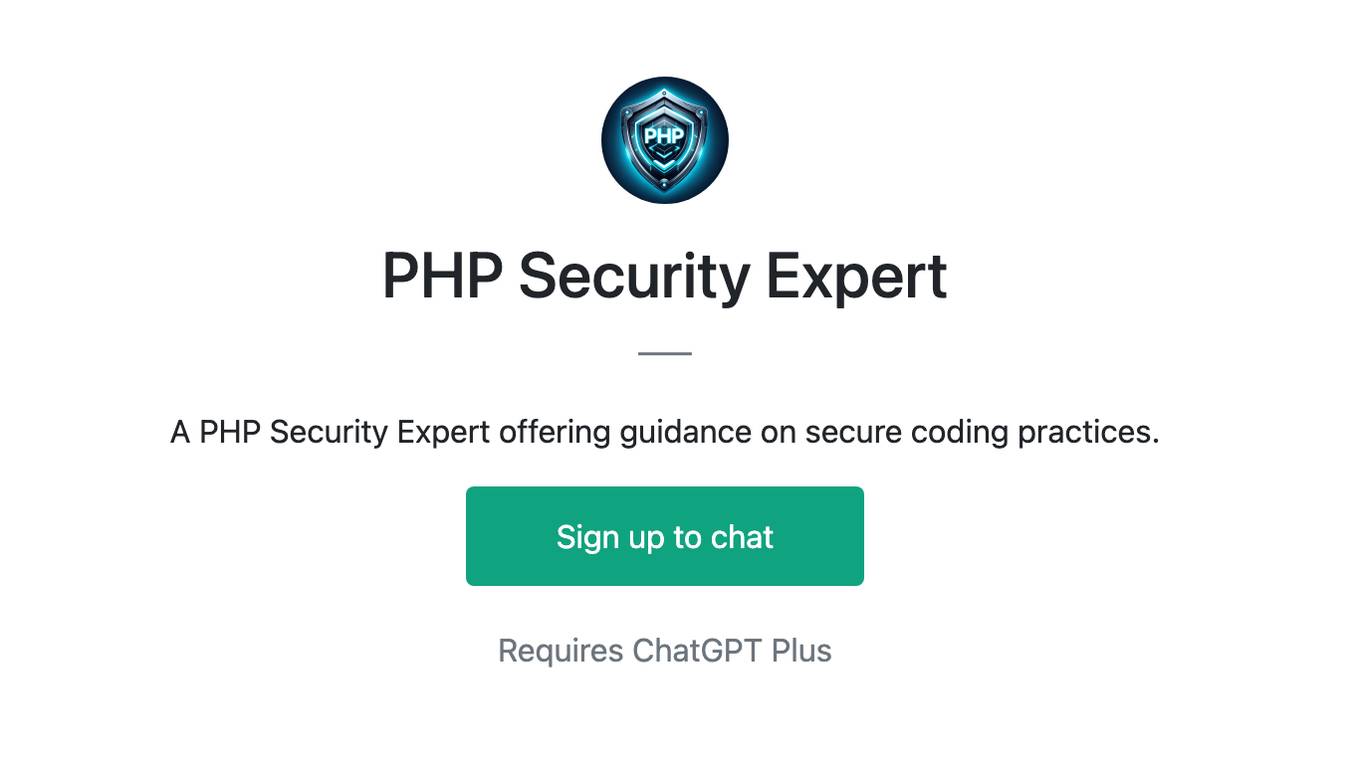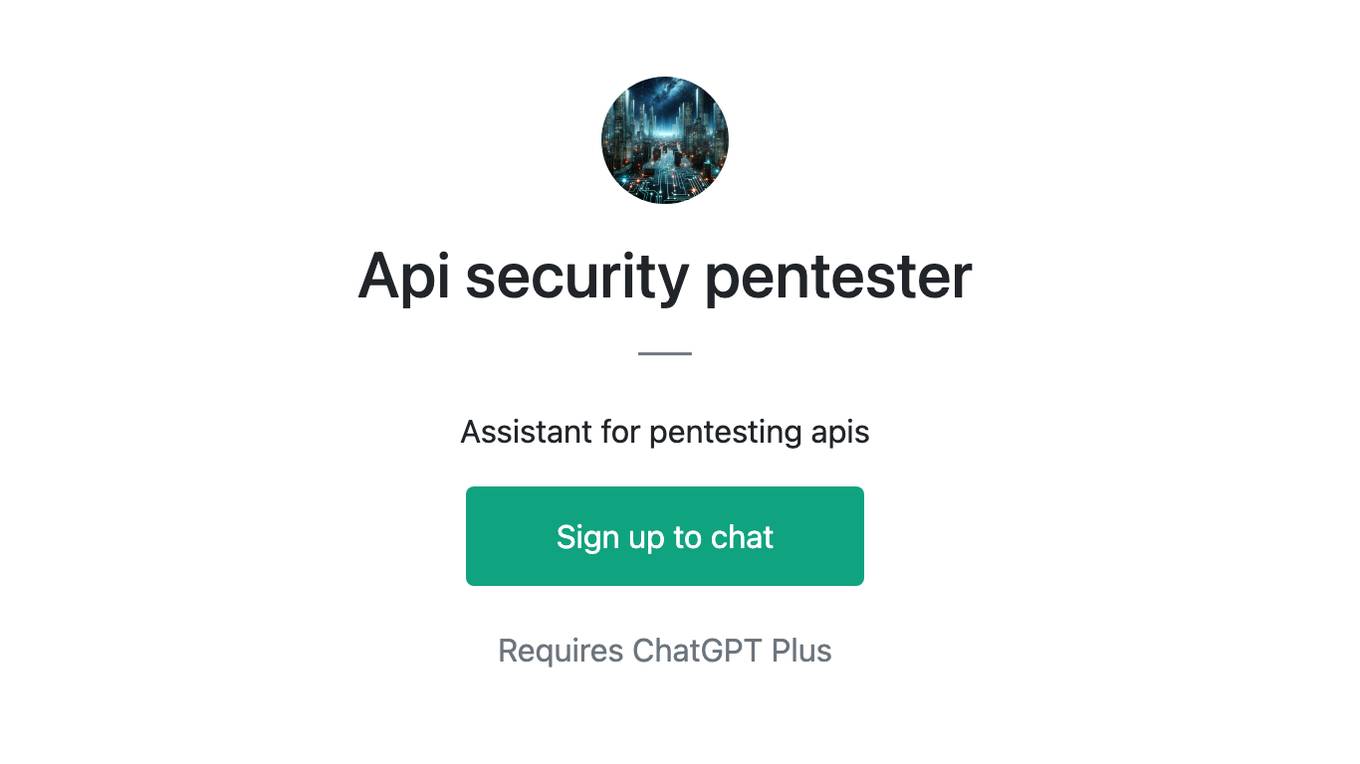Best AI tools for< Security Director >
Infographic
20 - AI tool Sites

icetana
icetana is an AI security video analytics software that offers safety and security analytics, forensic analysis, facial recognition, and license plate recognition. The core product uses self-learning AI for real-time event detection, connecting with existing security cameras to identify unusual or interesting events. It helps users stay ahead of security incidents with immediate alerts, reduces false alarms, and offers easy configuration and scalability. icetana AI is designed for industries such as remote guarding, hotels, safe cities, education, and mall management.
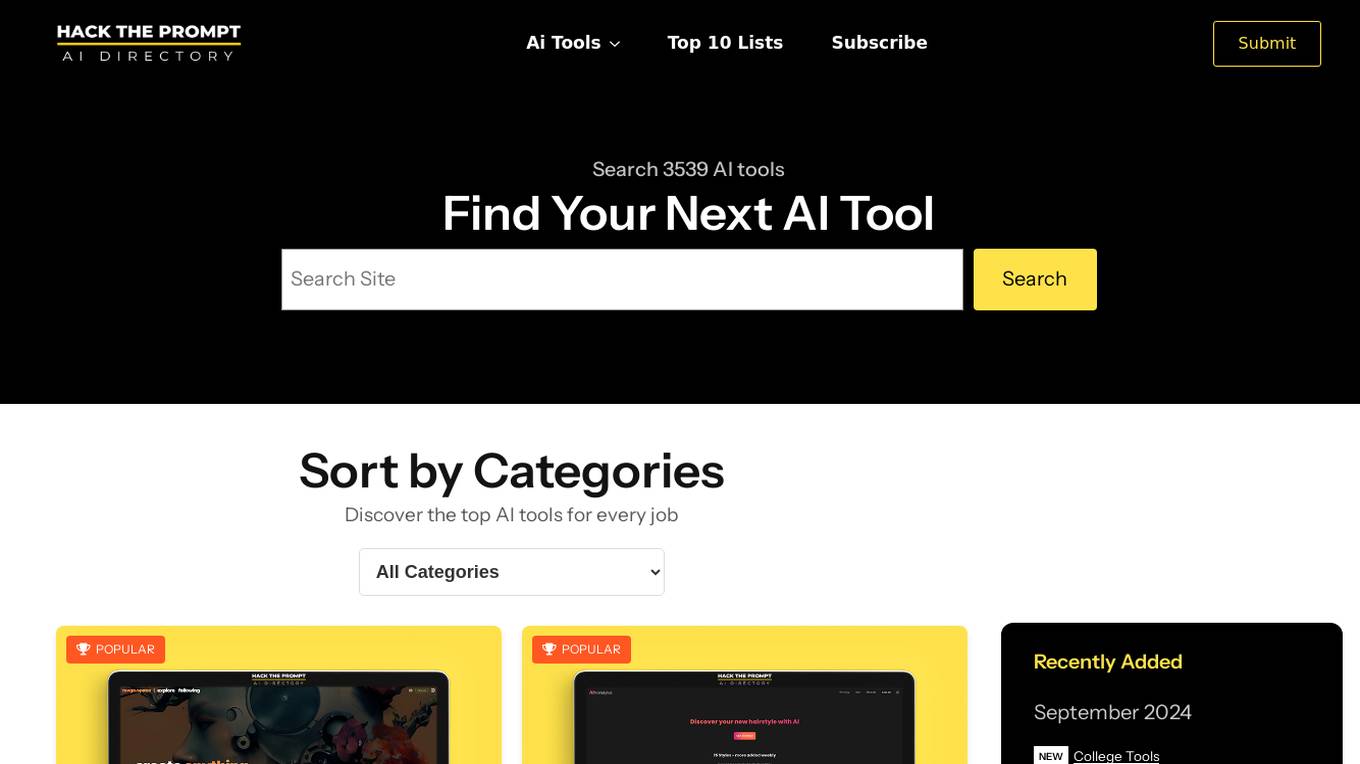
AI Directory
The website is an AI directory showcasing a wide range of AI tools across various categories such as art, business, chatbot, content creation, data analysis, development, education, finance, gaming, health, image generation, legal, marketing, music, productivity, real estate, security, SEO, social media, travel, video editing, website building, and writing. It provides detailed information about popular AI tools, their features, and applications. Users can explore and discover AI tools suitable for different jobs and tasks.
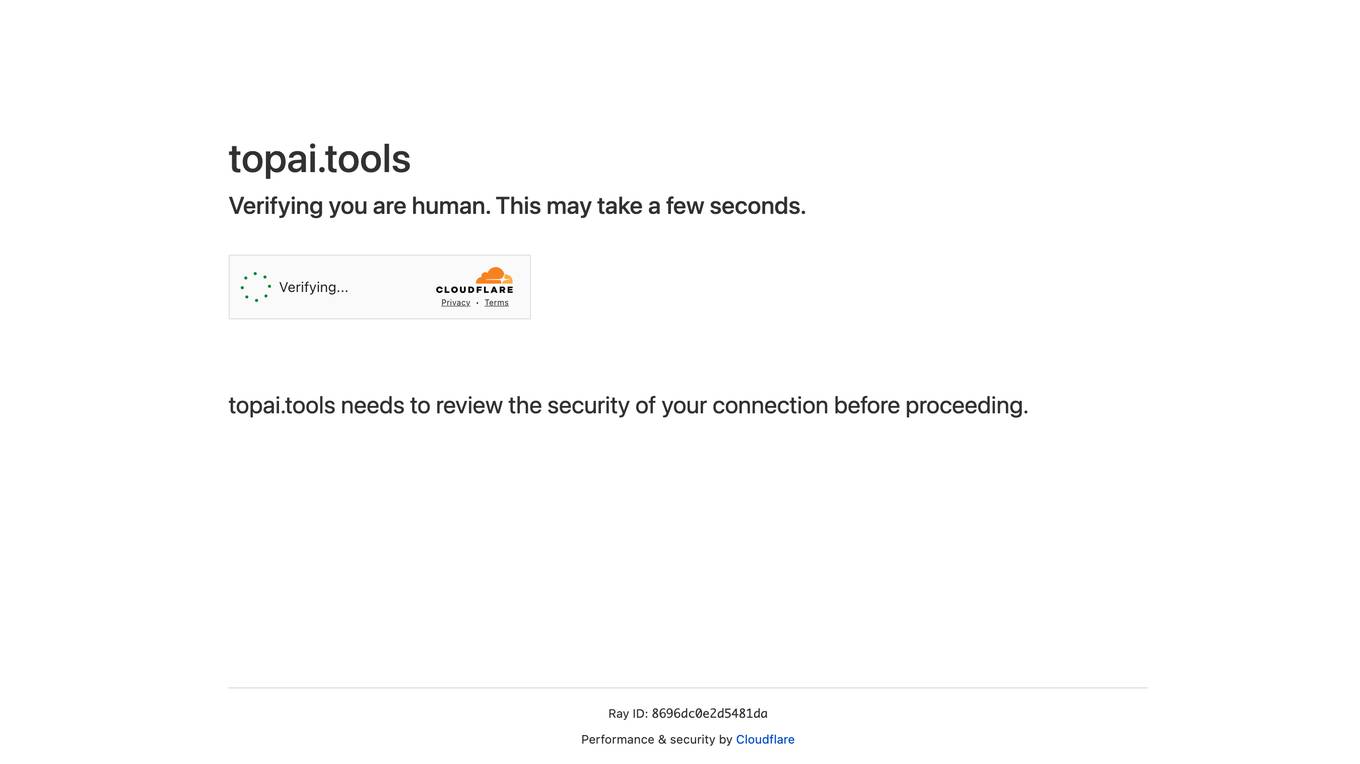
Topai.tools
Topai.tools is an AI tool designed to verify the security of user connections. It ensures a safe browsing experience by reviewing and authenticating the user's identity before proceeding. The tool helps in preventing unauthorized access and potential security threats by enabling JavaScript and cookies for secure browsing. With the assistance of Cloudflare, topai.tools offers high performance and robust security measures to protect user data and privacy.
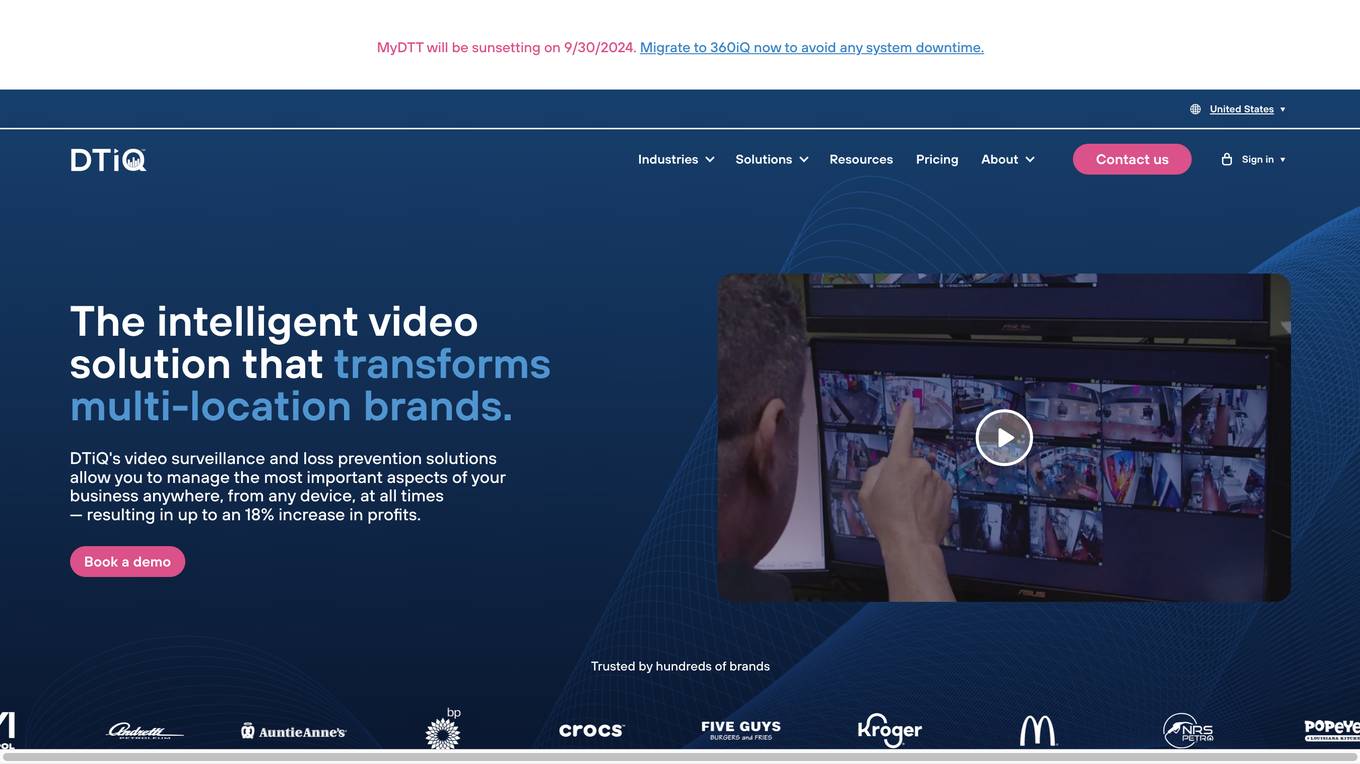
DTiQ
DTiQ is a leading provider of loss prevention and intelligent video solutions for businesses in the United States and globally. Their video surveillance and loss prevention solutions help businesses manage key aspects from any device, resulting in increased profits. DTiQ offers SmartAudit™, SmartAnalysis, and SmartAssurance products to enhance operational quality, save time, and provide innovative loss prevention solutions. Trusted by hundreds of brands, DTiQ prioritizes security, integrity, and support to help businesses run smarter and more efficiently.
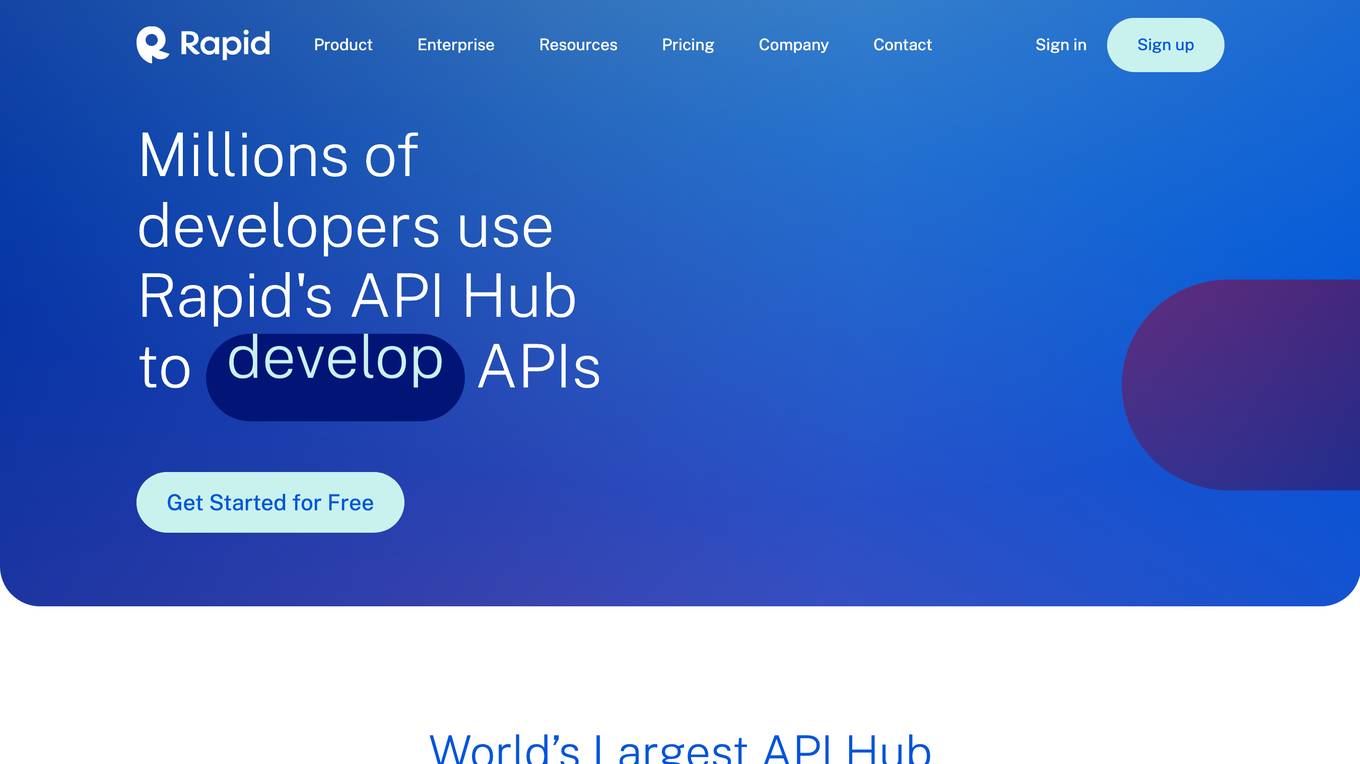
Rapid API Marketplace
Rapid API Marketplace is a comprehensive platform that offers a seamless connected experience for developers to build, use, and share APIs. It serves as a hub for both enterprise and public marketplaces, providing security features and client applications for Mac and VS Code. With a focus on industries like telecommunications, insurance, and travel, the platform offers resources such as eBooks, guides, webinars, and courses. Rapid API Marketplace aims to optimize API value, analytics, and monetization for businesses and developers.
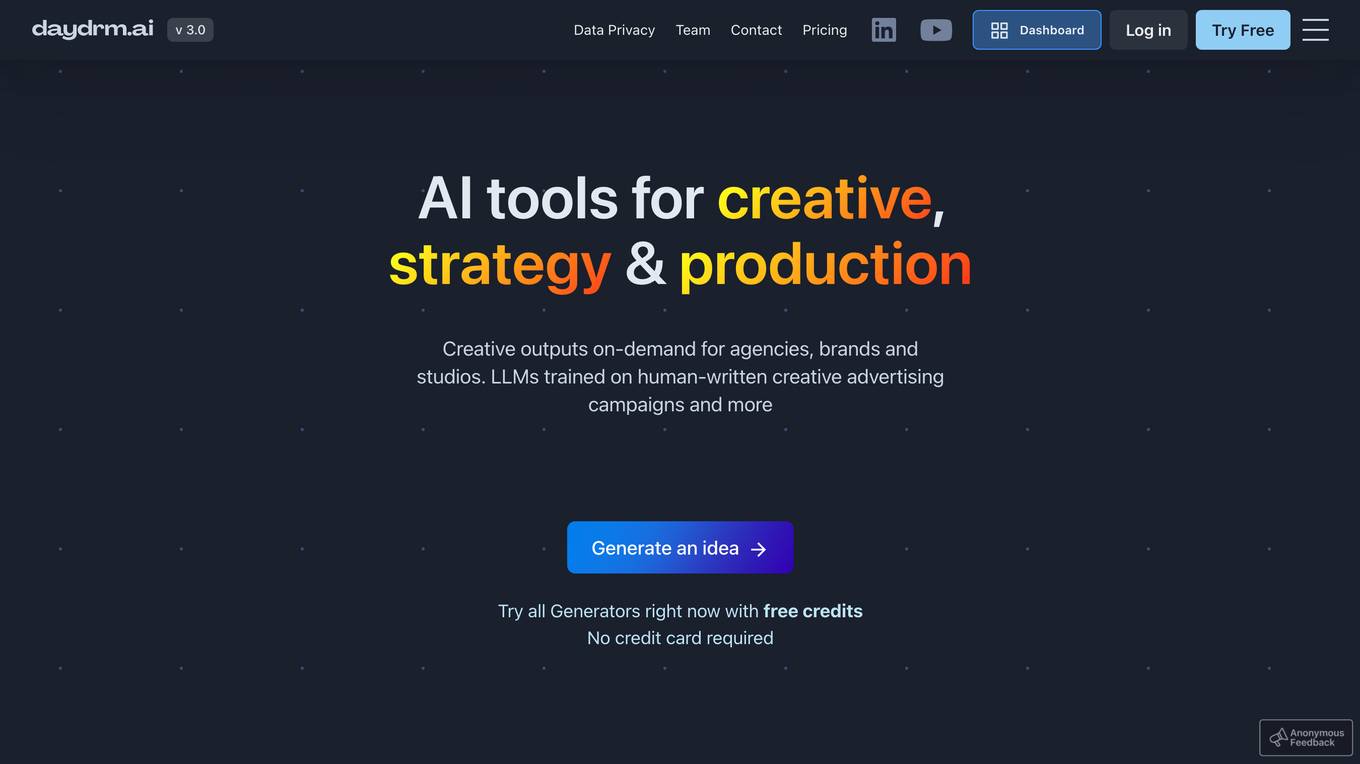
Daydrm.ai
Daydrm.ai is a suite of AI-powered tools designed to help creative professionals, strategists, and directors generate ideas, create content, and develop marketing campaigns. The platform offers a variety of generators, each trained on a specific dataset of human-written creative advertising campaigns. Users can input a brief and receive multiple outputs, which can then be used as a starting point for their own work. Daydrm.ai is committed to privacy and security, and all inputs and outputs are kept confidential.
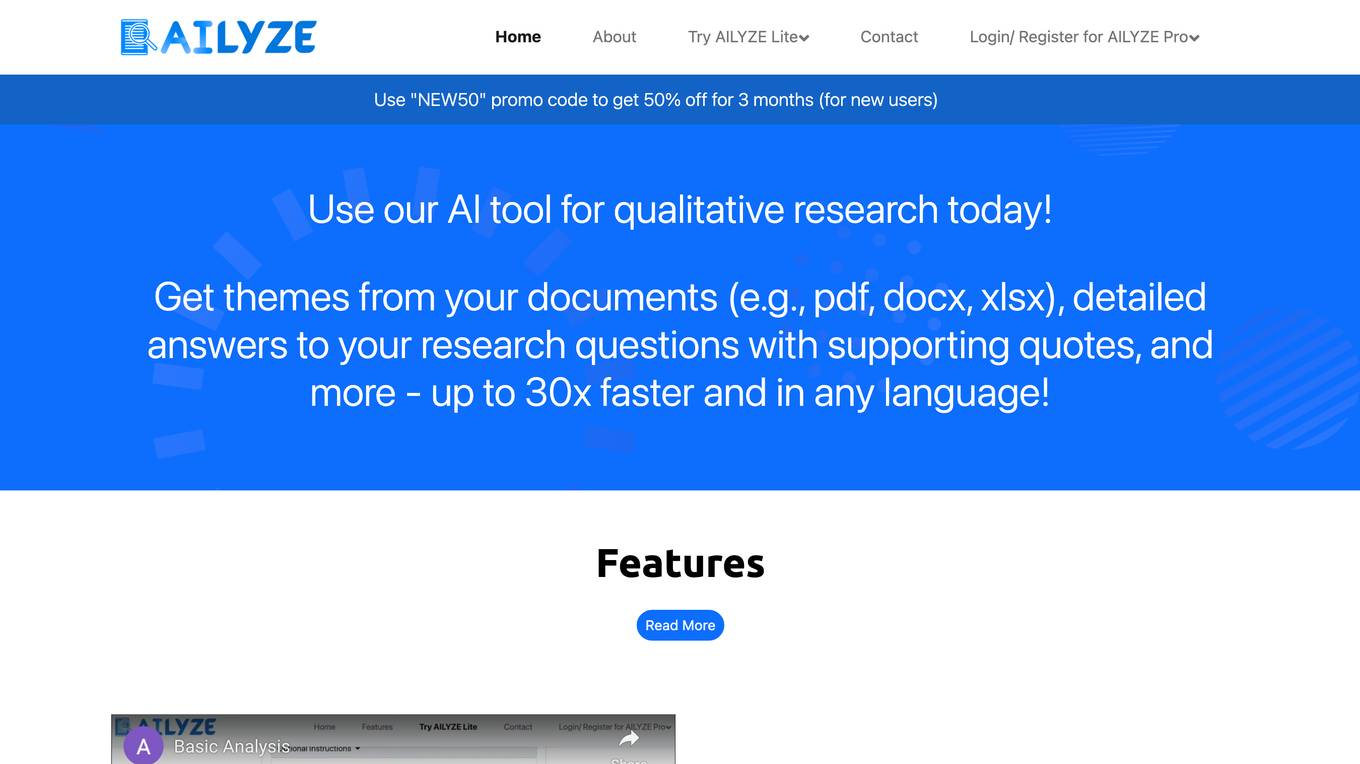
AILYZE
AILYZE is an AI tool designed for qualitative data collection and analysis. Users can upload various document formats in any language to generate codes, conduct thematic, frequency, content, and cross-group analysis, extract top quotes, and more. The tool also allows users to create surveys, utilize an AI voice interviewer, and recruit participants globally. AILYZE offers different plans with varying features and data security measures, including options for advanced analysis and AI interviewer add-ons. Additionally, users can tap into data scientists for detailed and customized analyses on a wide range of documents.
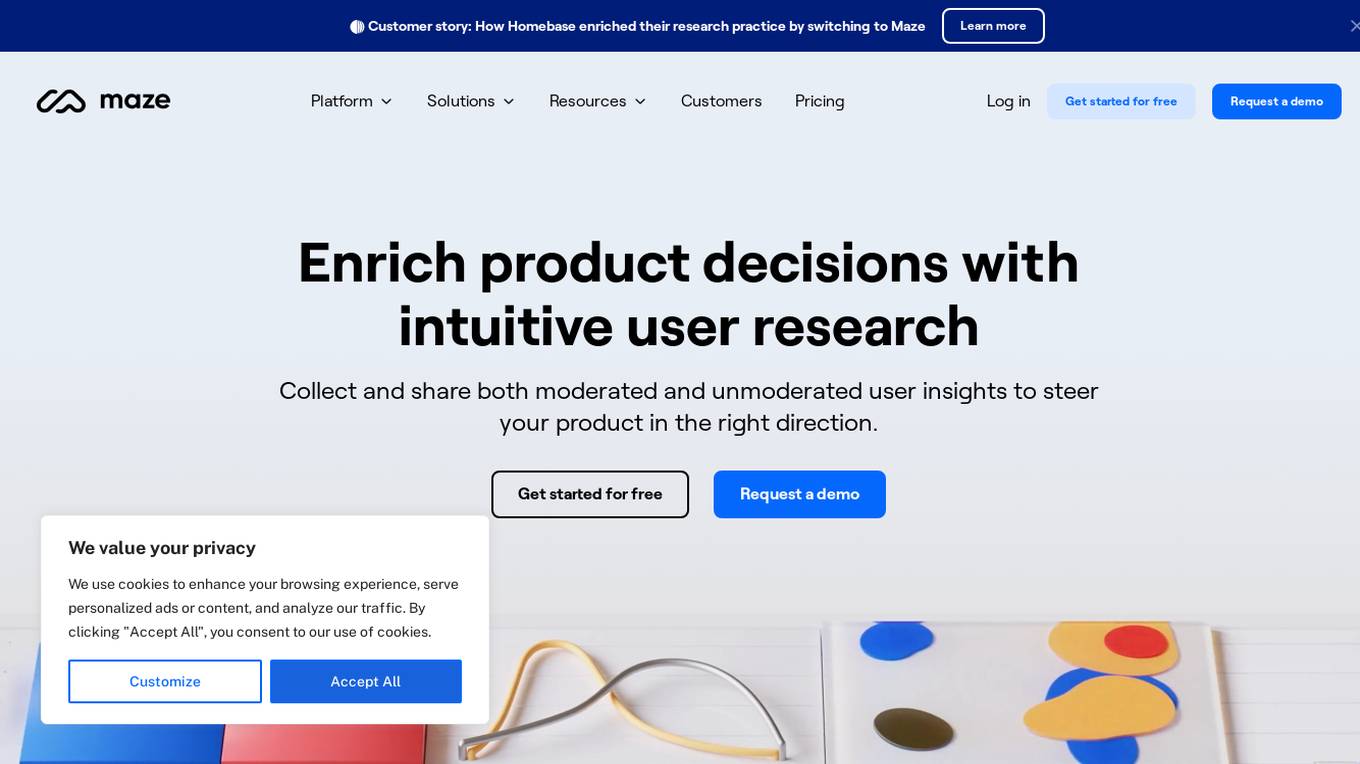
Maze
Maze is a continuous product discovery platform that enables users to enrich product decisions with intuitive user research. It offers a wide range of features such as prototype testing, website testing, surveys, interview studies, and more. With AI-powered tools and integrations with popular design tools, Maze helps users scale user insights and speed up product launches. The platform provides Enterprise-level protection, encrypted transmission, access control, data center security, GDPR compliance, SSO, and private workspaces to ensure data security and compliance. Trusted by companies of all industries and sizes, Maze empowers teams to make user-informed decisions and drive faster product iteration for a better user experience.
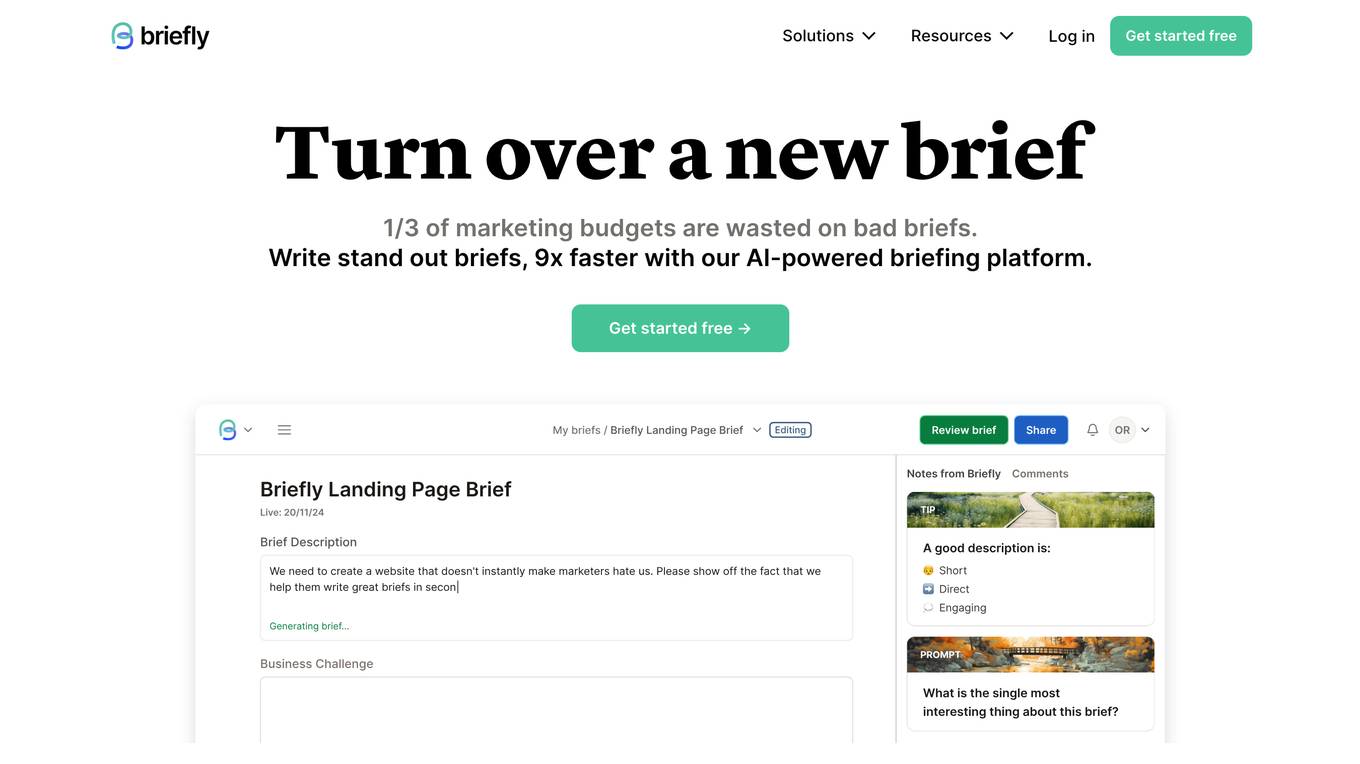
Briefly
Briefly is an AI-powered briefing platform that helps users write effective marketing briefs quickly. It offers features such as FastDrafts for generating drafts rapidly, tailored feedback for improving work, and personalized effectiveness case studies for inspiration. The platform ensures briefs align with strategic goals and offers enterprise-grade security and personalized onboarding. Briefly is trusted by marketers worldwide, from startups to Fortune 500 companies, to streamline the brief-writing process and enhance creativity and effectiveness.
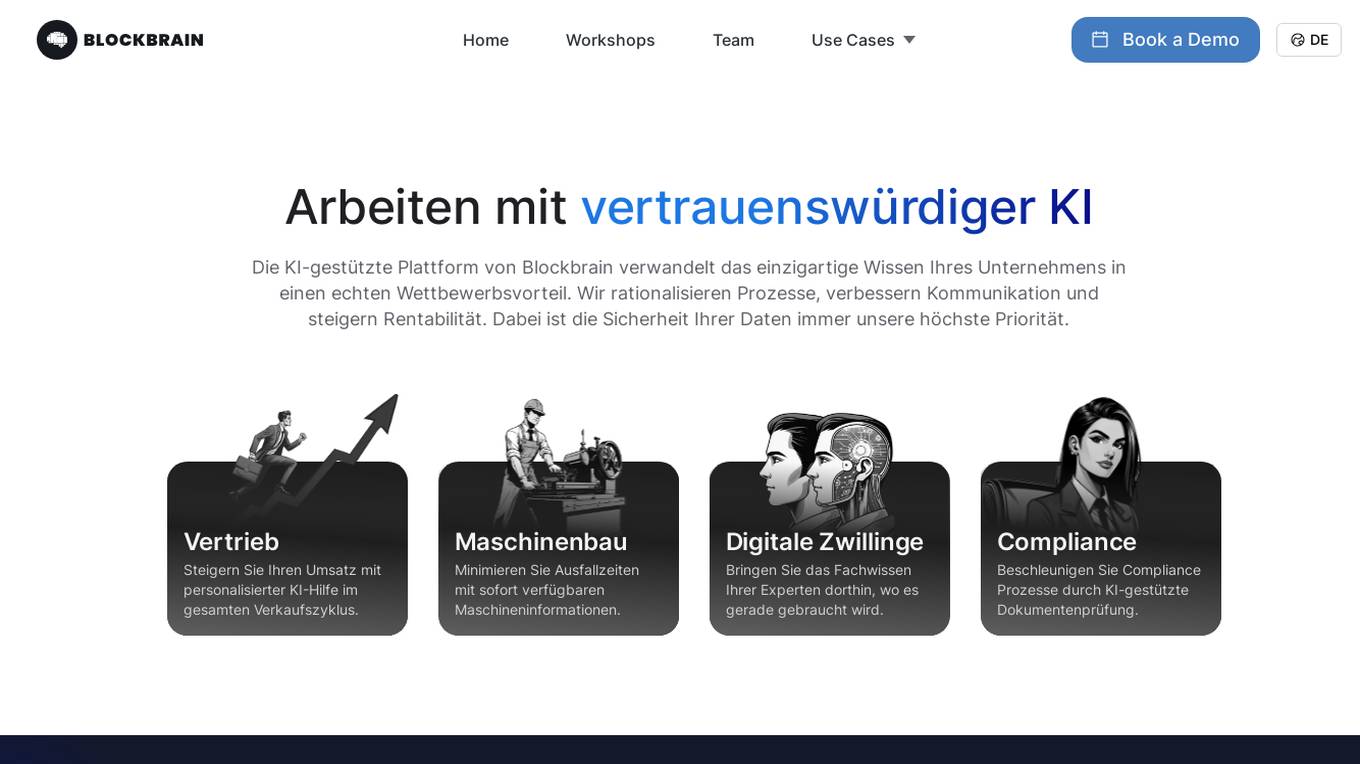
Blockbrain
Blockbrain is an AI-driven platform that helps businesses transform their unique knowledge into a competitive advantage. The platform streamlines processes, enhances communication, and boosts profitability while ensuring the security of valuable company information. It offers AI-powered solutions for sales productivity, machinery maintenance, digital twin implementation, and compliance automation. Blockbrain's Knowledge Bots, Cortex Data Vault, and measurable benefits for businesses make it a trusted choice for Mittelstand industry leaders.
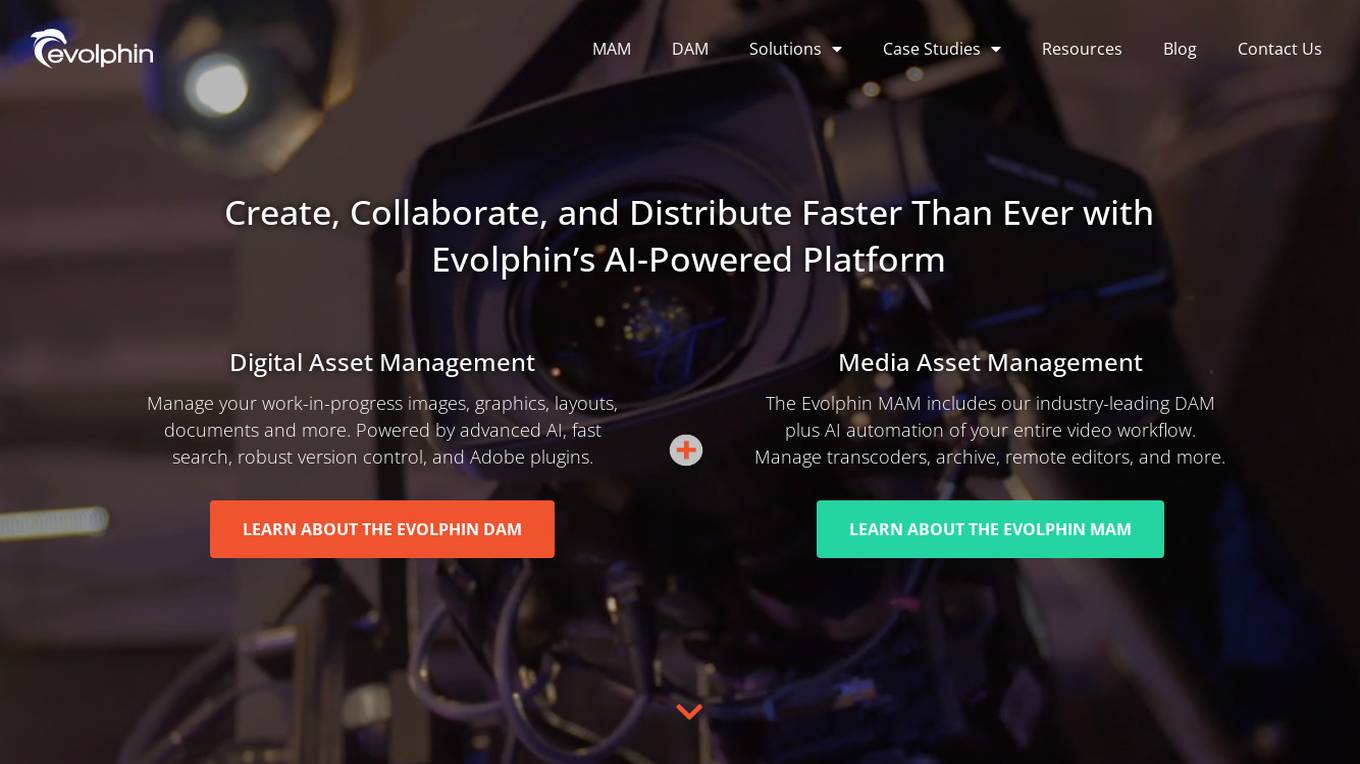
Evolphin
Evolphin is a leading AI-powered platform for Digital Asset Management (DAM) and Media Asset Management (MAM) that caters to creatives, sports professionals, marketers, and IT teams. It offers advanced AI capabilities for fast search, robust version control, and Adobe plugins. Evolphin's AI automation streamlines video workflows, identifies objects, faces, logos, and scenes in media, generates speech-to-text for search and closed captioning, and enables automations based on AI engine identification. The platform allows for editing videos with AI, creating rough cuts instantly. Evolphin's cloud solutions facilitate remote media production pipelines, ensuring speed, security, and simplicity in managing creative assets.
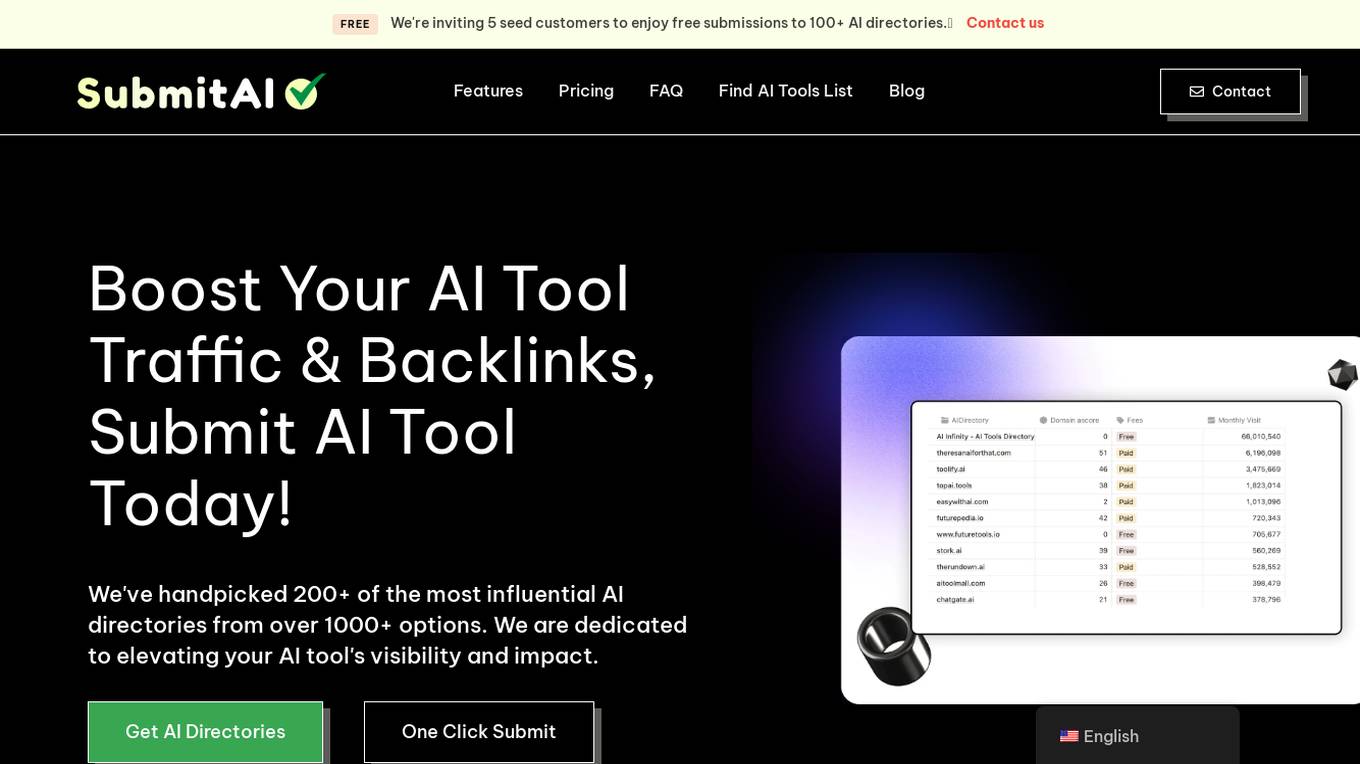
SubmitAI
SubmitAI is an AI tool that offers a service to submit AI tools to over 100 directories, aiming to enhance visibility and impact for AI products. The platform handpicks influential directories to optimize traffic and backlinks, providing a seamless submission process. Users can choose from different submission plans to save time and effort, with detailed reports and data insights included. SubmitAI also offers community engagement opportunities within the AI industry, fostering collaboration and networking. The tool prioritizes user satisfaction and data security, ensuring encrypted information for directory submissions.
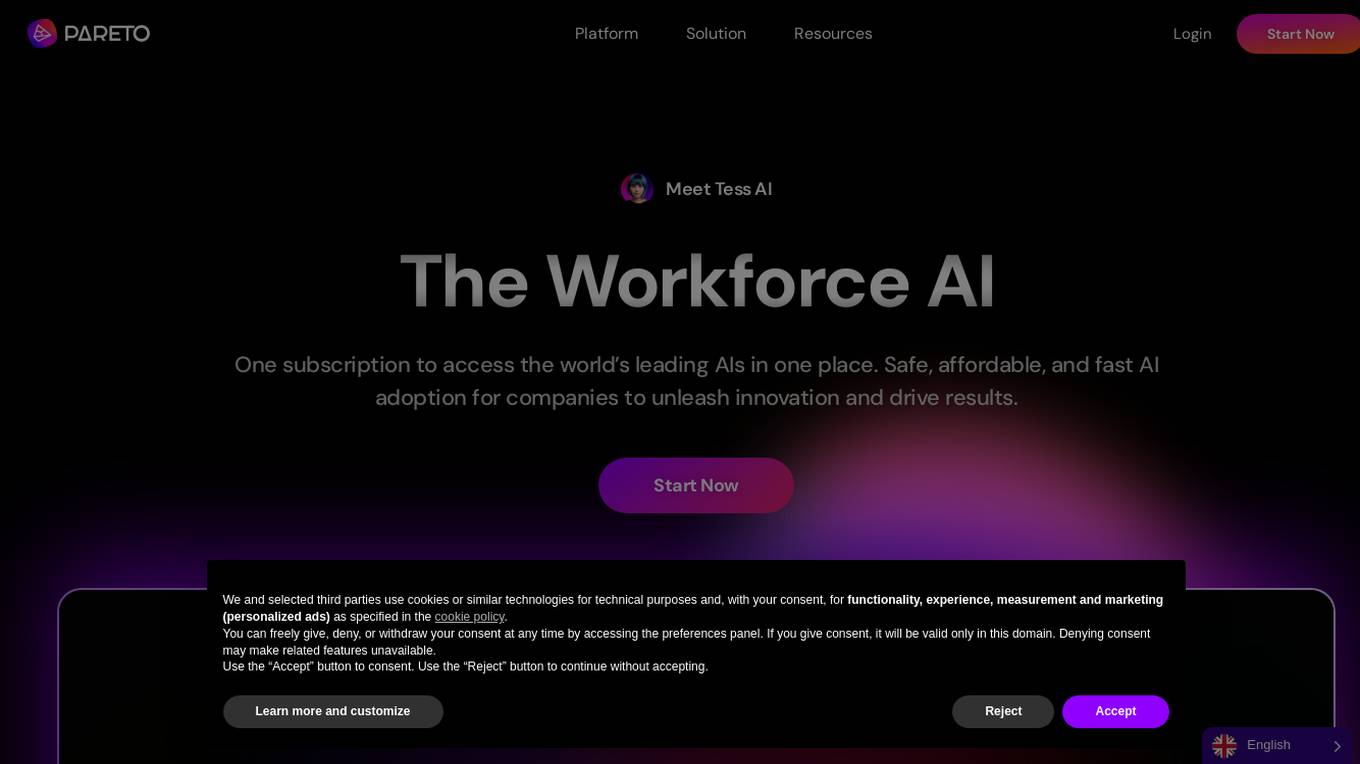
Pareto® - Tess AI
Pareto® - Tess AI is a global generative AI leader for companies, offering a platform that provides safe, affordable, and fast AI adoption for businesses. It offers a wide range of AI services for marketing, customer service, HR, sales, and finance, as well as tools for content creation, market analysis, and more. With Tess AI, companies can access a diverse ecosystem of technology and generative AI firms, boosting brand growth and sales through innovative AI solutions.
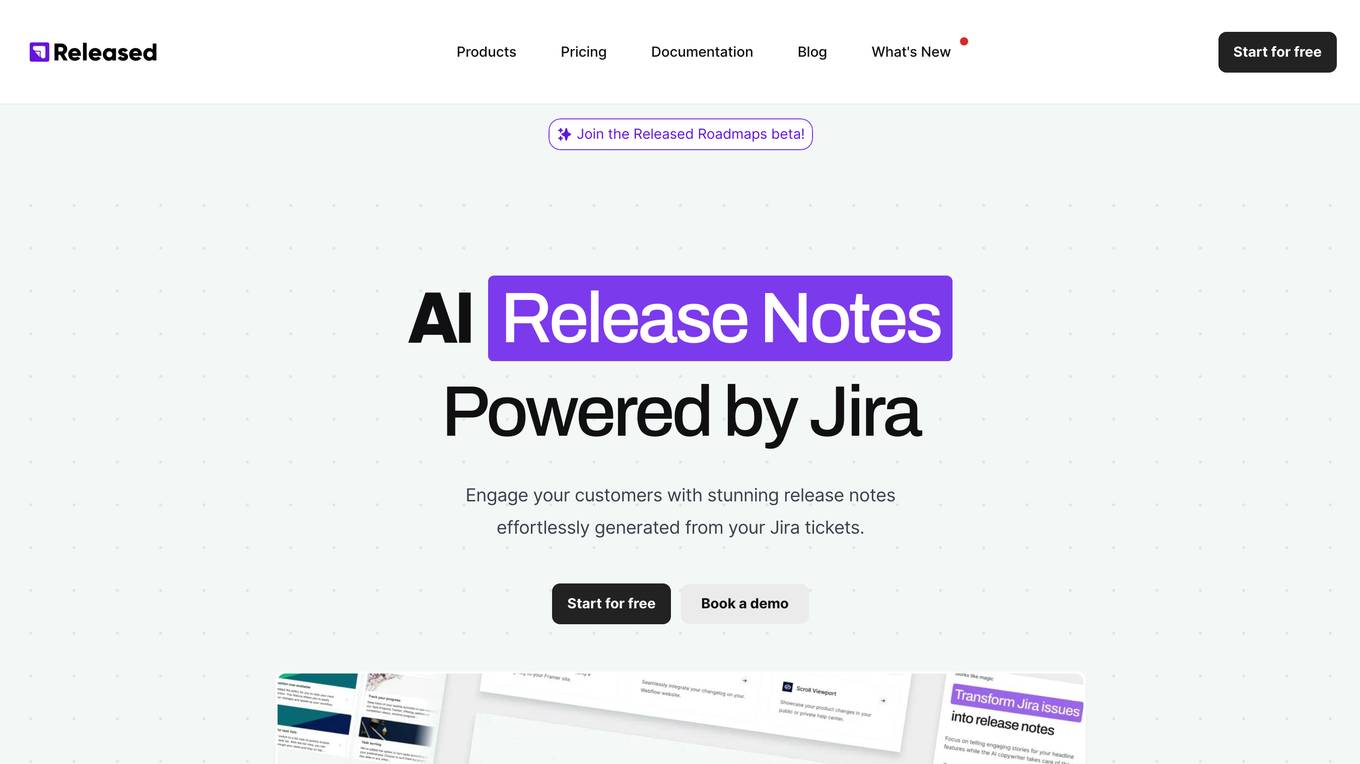
Released
Released is an AI-powered tool designed to transform Jira tickets into shareable roadmaps and release notes. It helps product teams communicate product plans and updates effectively, engaging customers and stakeholders with stunning visuals and effortless generation of release notes. The tool offers features like post categorization, templates creation, issue list compilation, custom color palettes, and cross-project boards. Released integrates seamlessly with various publishing tools, ensuring security and scalability with SOC 2 Type 2 certification and encryption practices. Users can easily manage user provisioning, sync with Active Directory, and share updates publicly or privately. Loved by product teams, Released simplifies communication processes and reduces the time required to publish go-to-market plans.
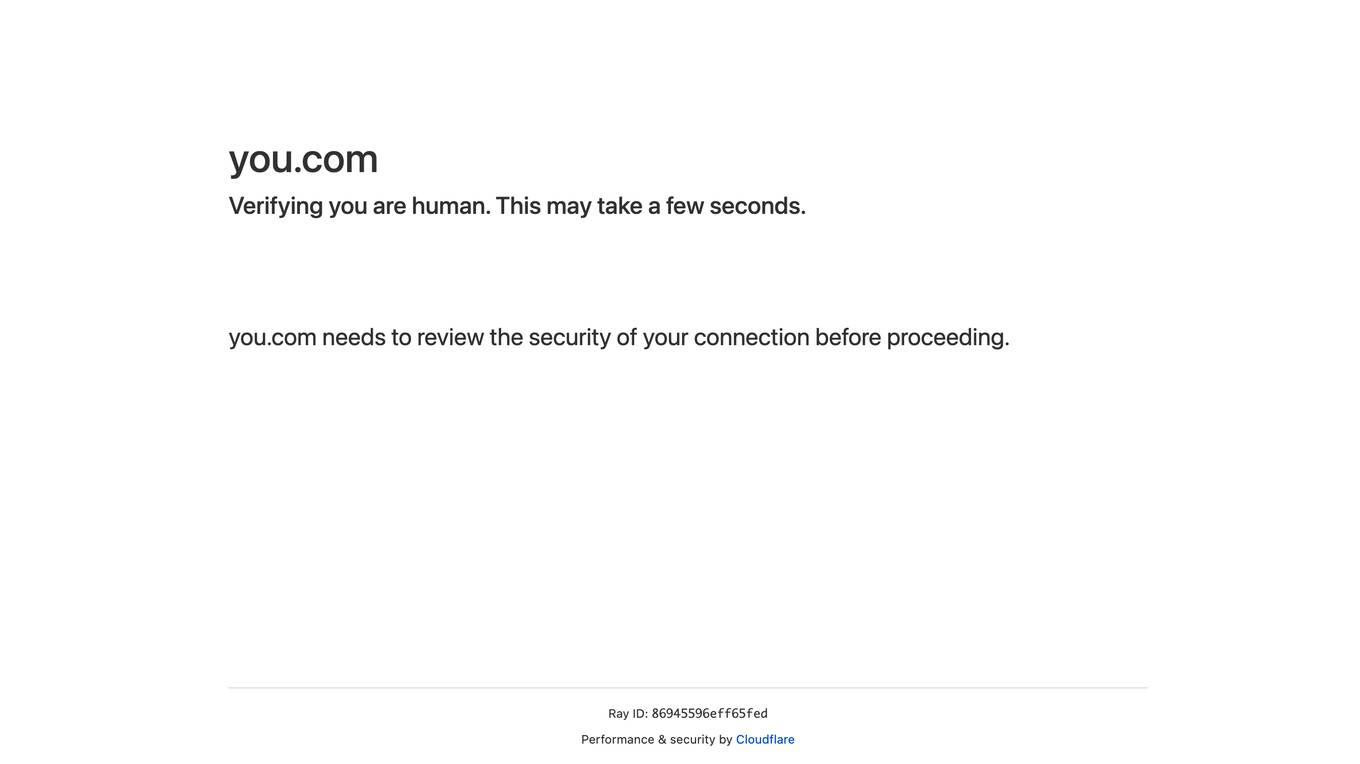
Cloudflare Security Service
The website is a security service provided by Cloudflare to protect websites from online attacks. It blocks users who trigger security measures, such as submitting certain words or phrases, SQL commands, or malformed data. Users can contact the site owner to resolve the issue by providing details of the incident. Cloudflare uses a unique Ray ID to identify blocked requests and offers performance and security enhancements.
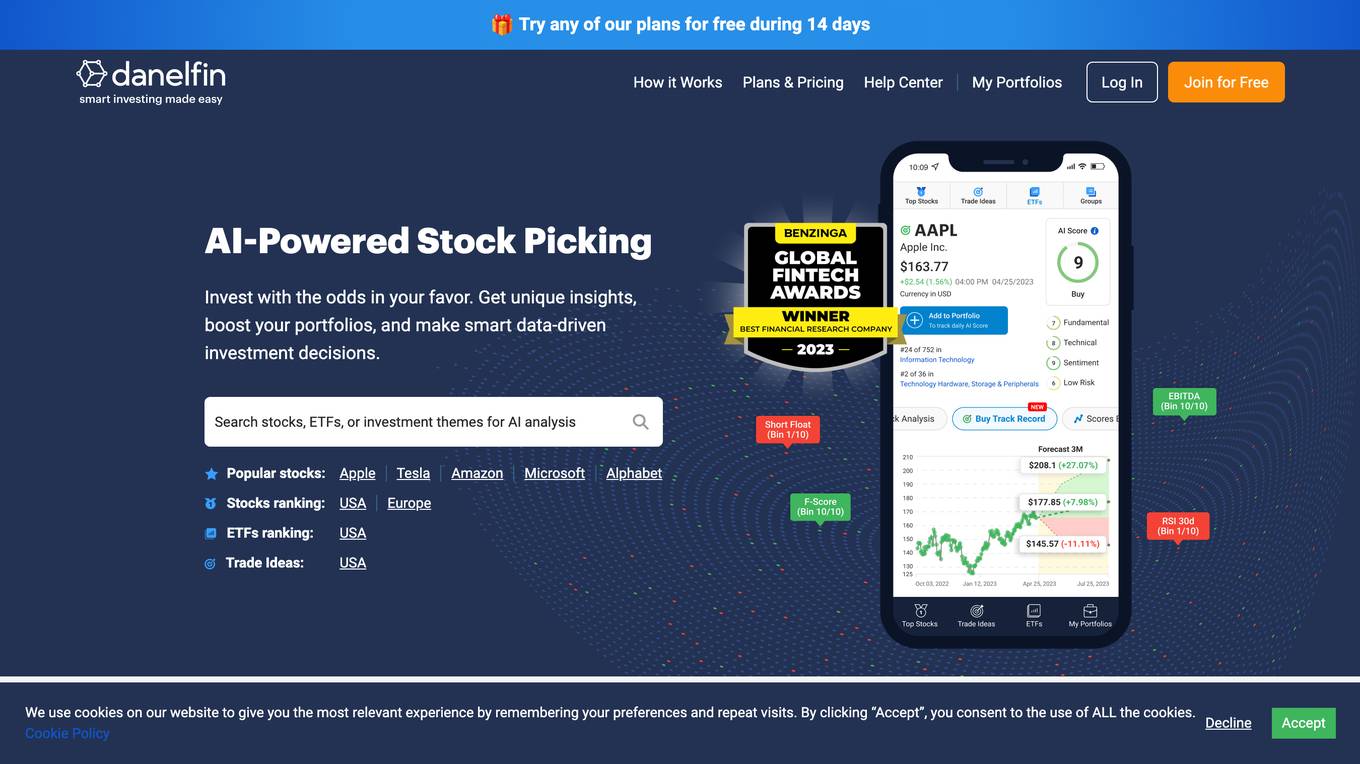
Vercel Security Checkpoint
Vercel Security Checkpoint is a web application that provides a security verification process for users accessing the Vercel platform. It ensures the safety and integrity of the platform by verifying the user's browser and enabling JavaScript before proceeding. The checkpoint serves as a protective measure to prevent unauthorized access and potential security threats.
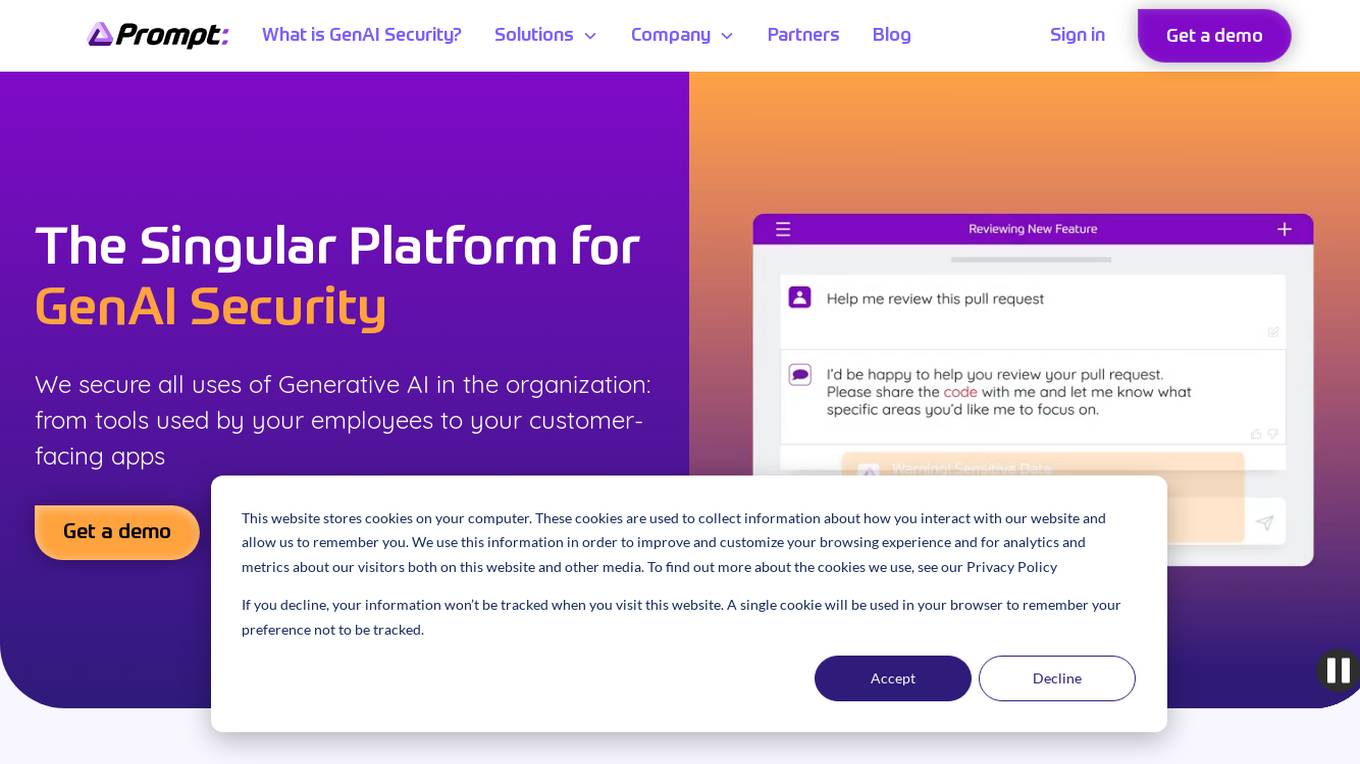
Prompt Security
Prompt Security is a platform that secures all uses of Generative AI in the organization: from tools used by your employees to your customer-facing apps.
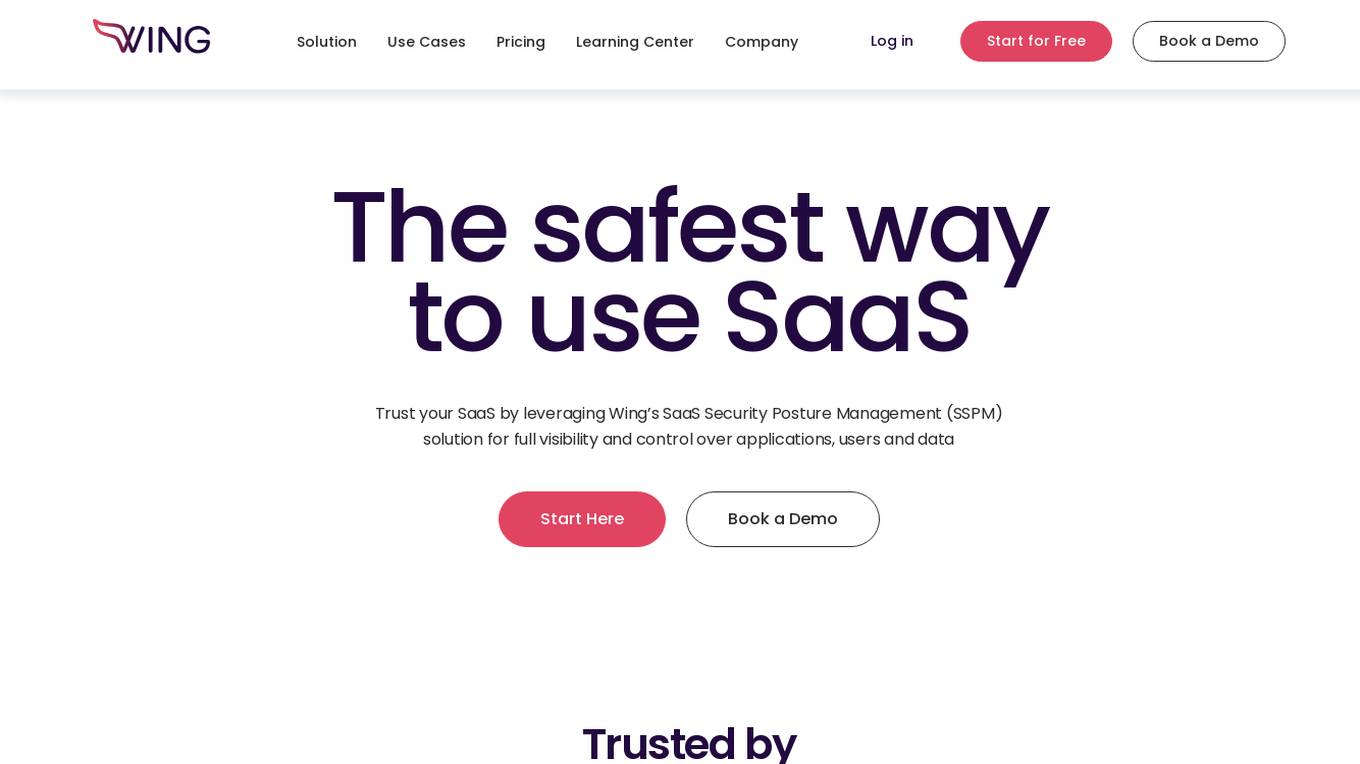
Wing Security
Wing Security is a SaaS Security Posture Management (SSPM) solution that helps businesses protect their data by providing full visibility and control over applications, users, and data. The platform offers features such as automated remediation, AI discovery, real-time SaaS visibility, vendor risk management, insider risk management, and more. Wing Security enables organizations to eliminate risky applications, manage user behavior, and protect sensitive data from unauthorized access. With a focus on security first, Wing Security helps businesses leverage the benefits of SaaS while staying protected.
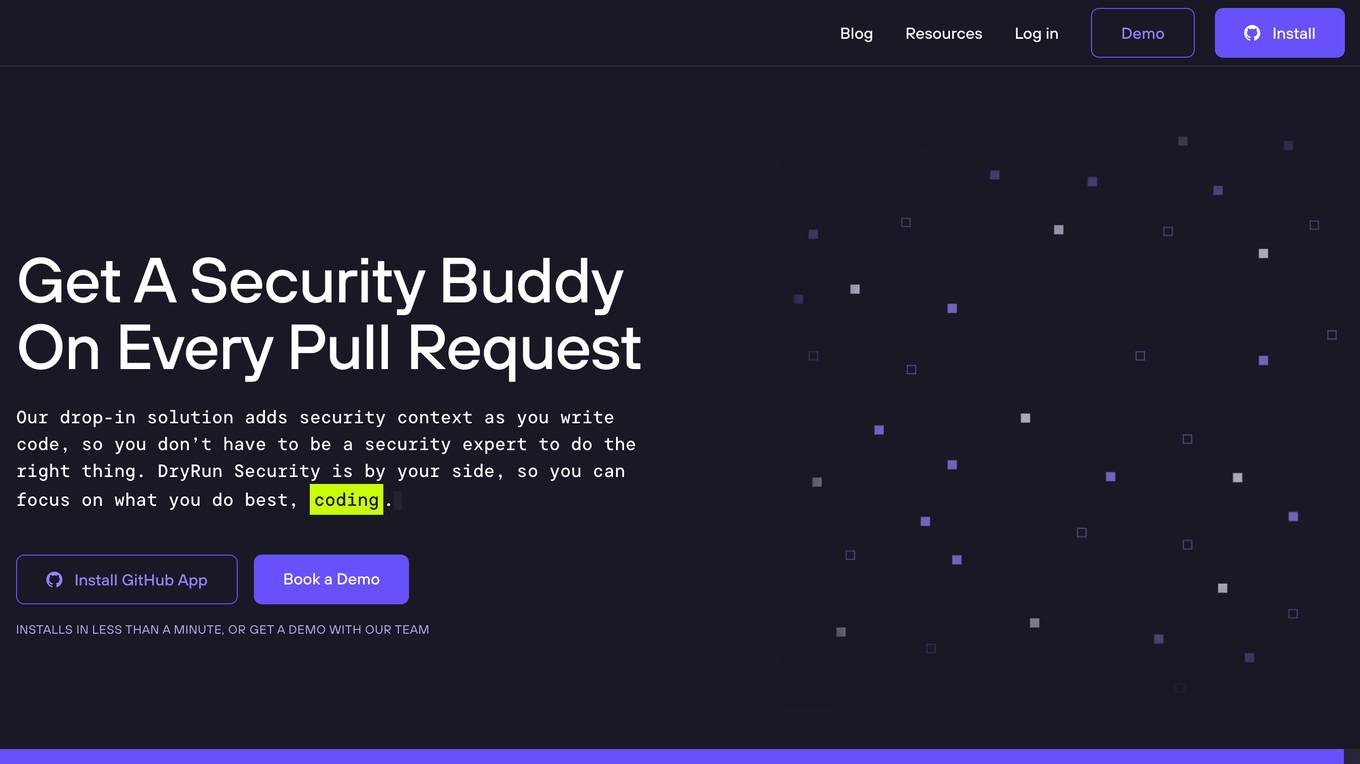
DryRun Security
DryRun Security is an AI-powered security tool designed to provide developers with security context and analysis for code changes in real-time. It offers a suite of analyzers to identify risky code changes, such as SQL injection, command injection, and sensitive file modifications. The tool integrates seamlessly with GitHub repositories, ensuring developers receive security feedback before merging code changes. DryRun Security aims to empower developers to write secure code efficiently and effectively.
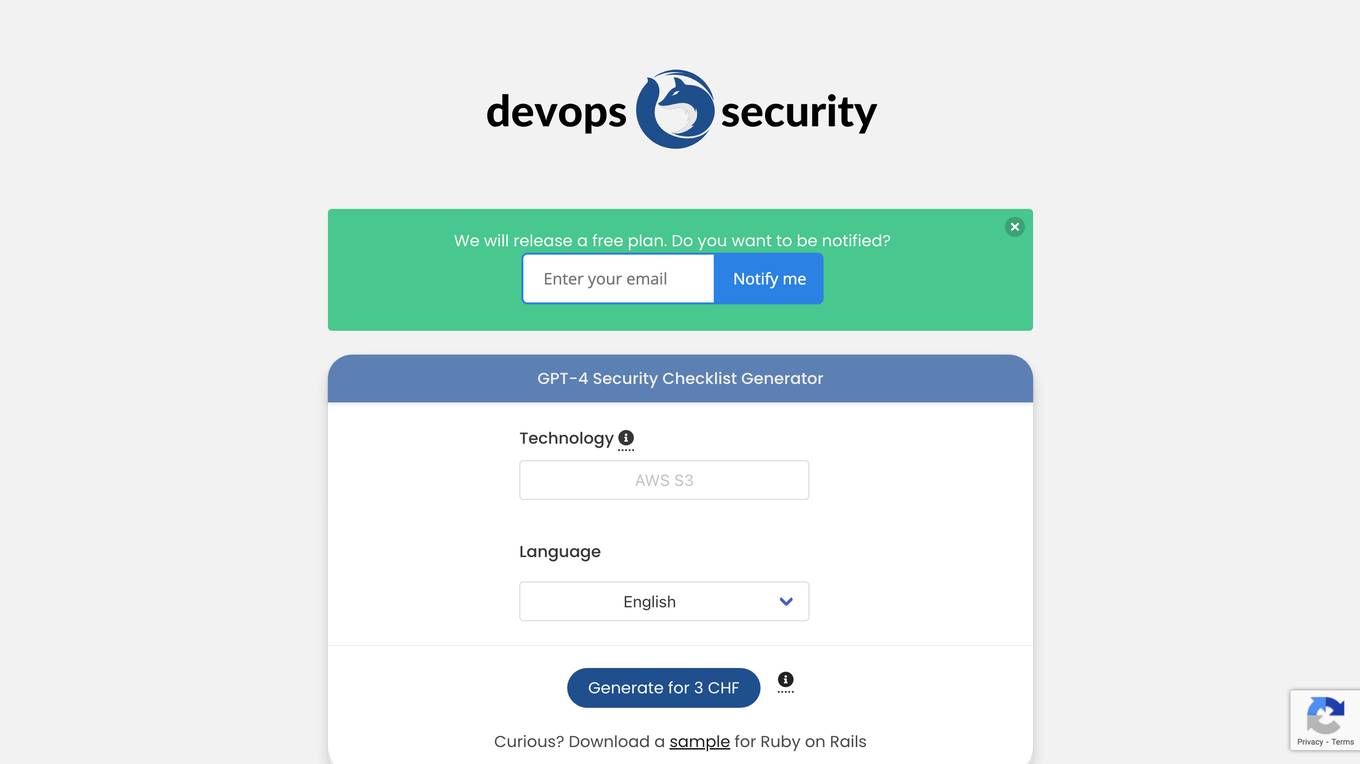
DevOps Security Platform
DevOps Security Platform is an AI-native security tool designed to automate security requirements definition, enforcement, risk assessments, and threat modeling. It helps companies secure their applications by identifying risks and security requirements at the beginning of the Software Development Lifecycle and enforcing them before go-live. The platform offers innovative features, customization options, and seamless integrations with existing tools to enhance security practices.
20 - Open Source Tools
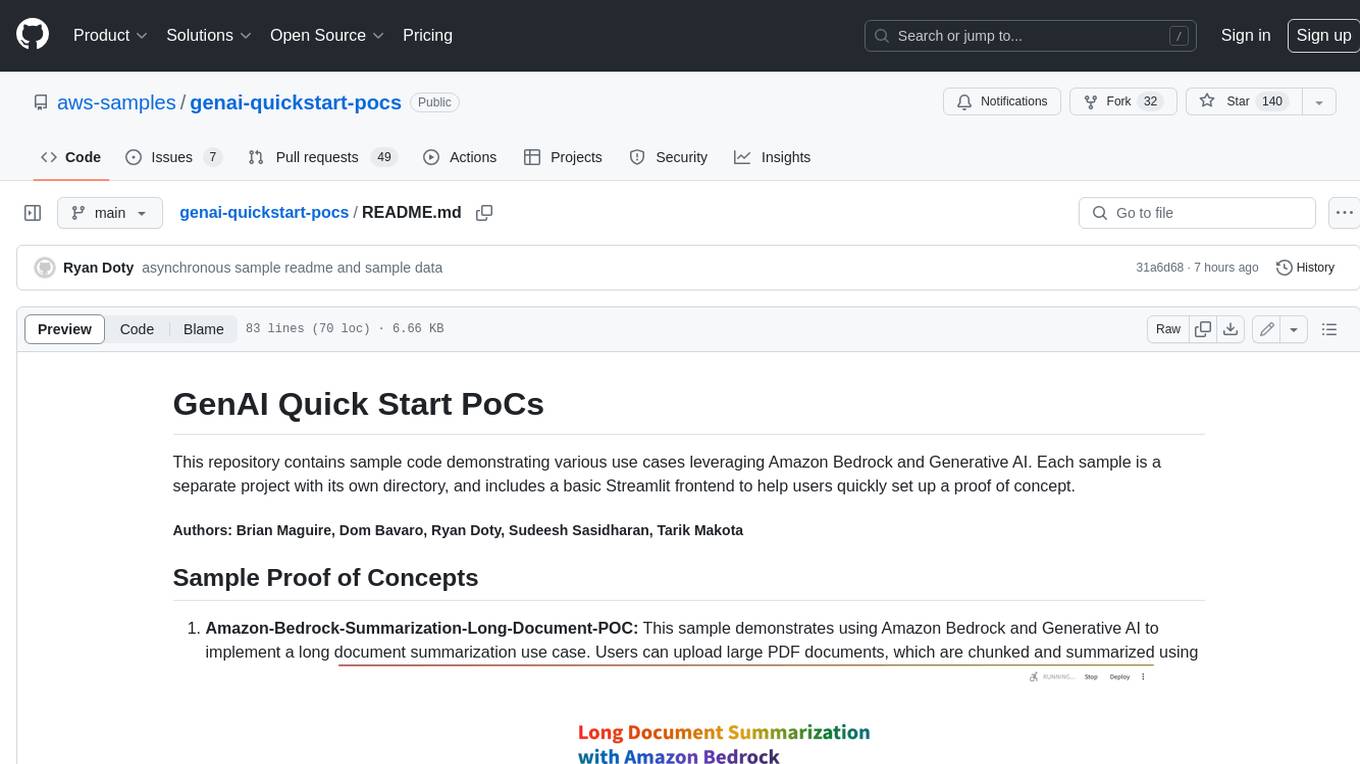
genai-quickstart-pocs
This repository contains sample code demonstrating various use cases leveraging Amazon Bedrock and Generative AI. Each sample is a separate project with its own directory, and includes a basic Streamlit frontend to help users quickly set up a proof of concept.
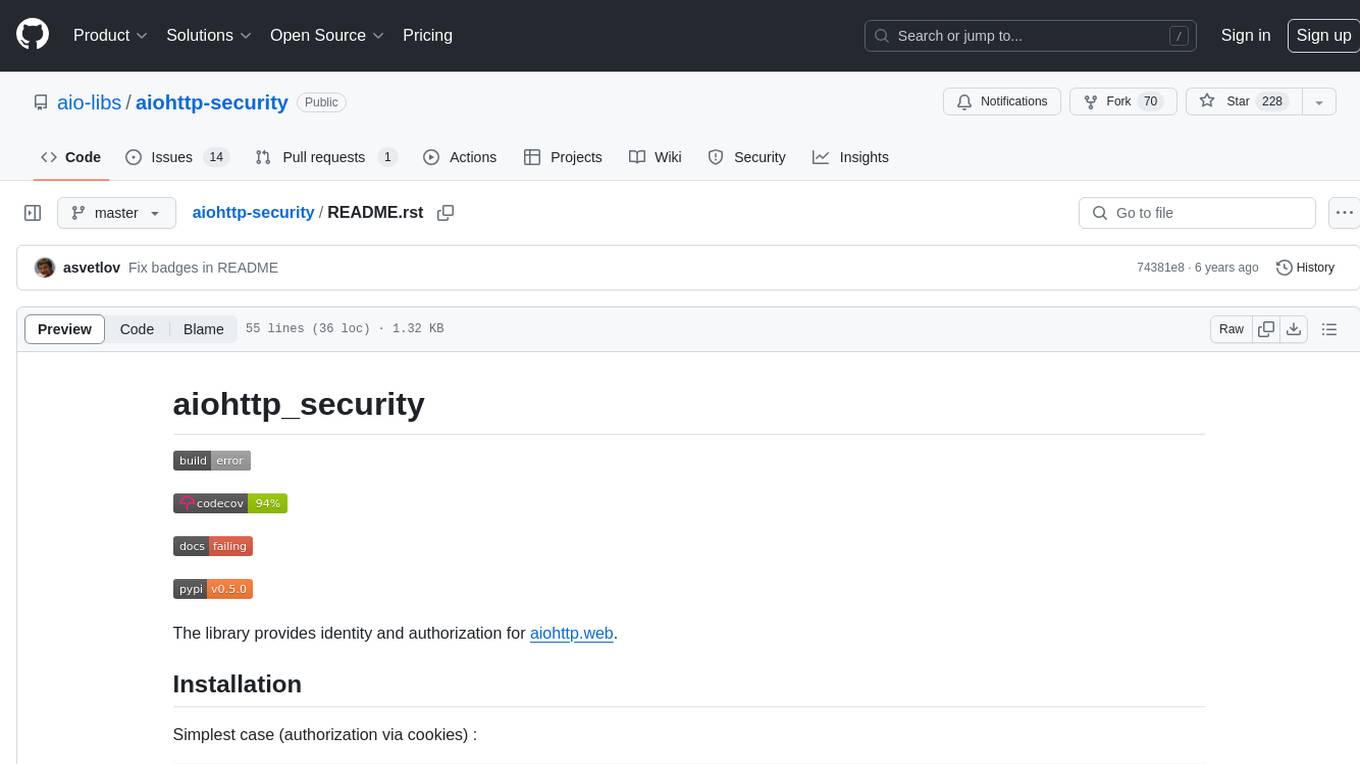
aiohttp-security
aiohttp_security is a library that provides identity and authorization for aiohttp.web. It offers features for handling authorization via cookies and supports aiohttp-session. The library includes examples for basic usage and database authentication, along with demos in the demo directory. For development, the library requires installation of specific requirements listed in the requirements-dev.txt file. aiohttp_security is licensed under the Apache 2 license.
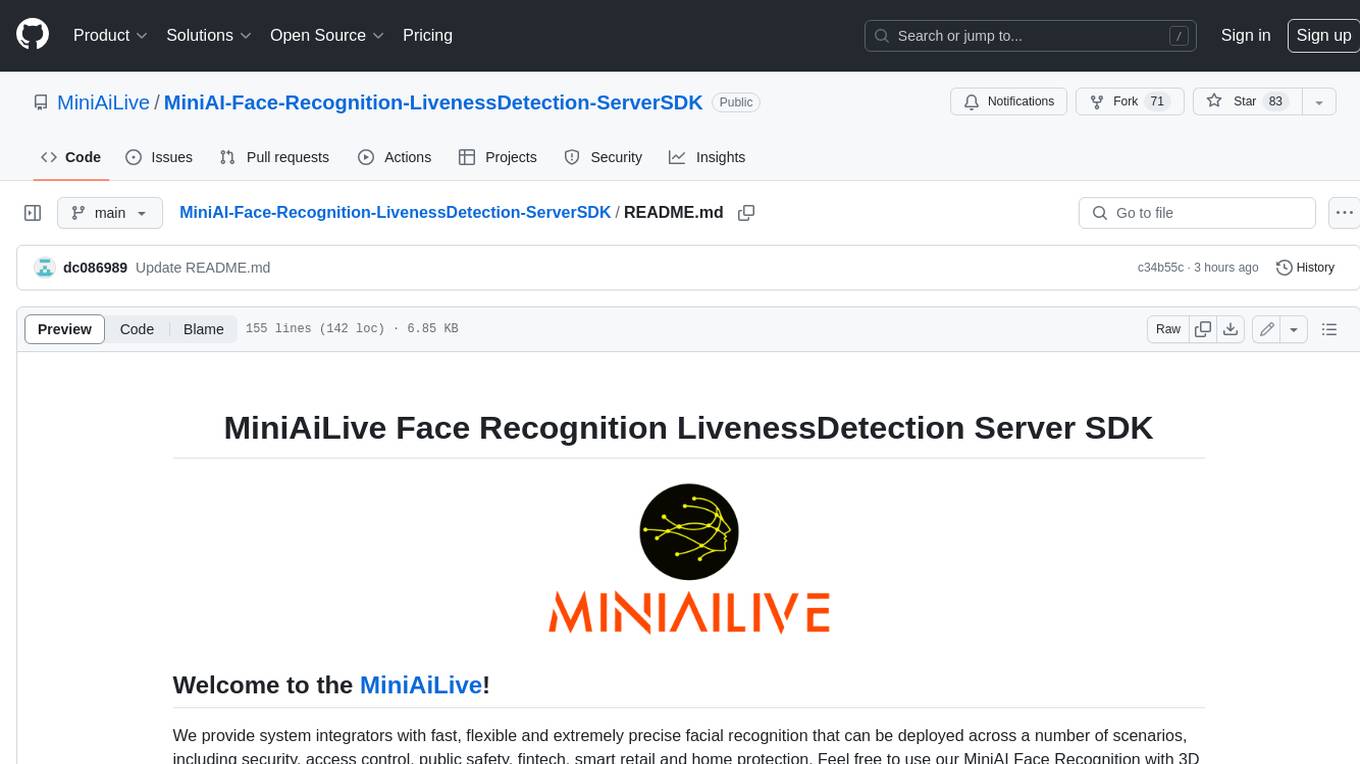
MiniAI-Face-Recognition-LivenessDetection-ServerSDK
The MiniAiLive Face Recognition LivenessDetection Server SDK provides system integrators with fast, flexible, and extremely precise facial recognition that can be deployed across various scenarios, including security, access control, public safety, fintech, smart retail, and home protection. The SDK is fully on-premise, meaning all processing happens on the hosting server, and no data leaves the server. The project structure includes bin, cpp, flask, model, python, test_image, and Dockerfile directories. To set up the project on Linux, download the repo, install system dependencies, and copy libraries into the system folder. For Windows, contact MiniAiLive via email. The C++ example involves replacing the license key in main.cpp, building the project, and running it. The Python example requires installing dependencies and running the project. The Python Flask example involves replacing the license key in app.py, installing dependencies, and running the project. The Docker Flask example includes building the docker image and running it. To request a license, contact MiniAiLive. Contributions to the project are welcome by following specific steps. An online demo is available at https://demo.miniai.live. Related products include MiniAI-Face-Recognition-LivenessDetection-AndroidSDK, MiniAI-Face-Recognition-LivenessDetection-iOS-SDK, MiniAI-Face-LivenessDetection-AndroidSDK, MiniAI-Face-LivenessDetection-iOS-SDK, MiniAI-Face-Matching-AndroidSDK, and MiniAI-Face-Matching-iOS-SDK. MiniAiLive is a leading AI solutions company specializing in computer vision and machine learning technologies.
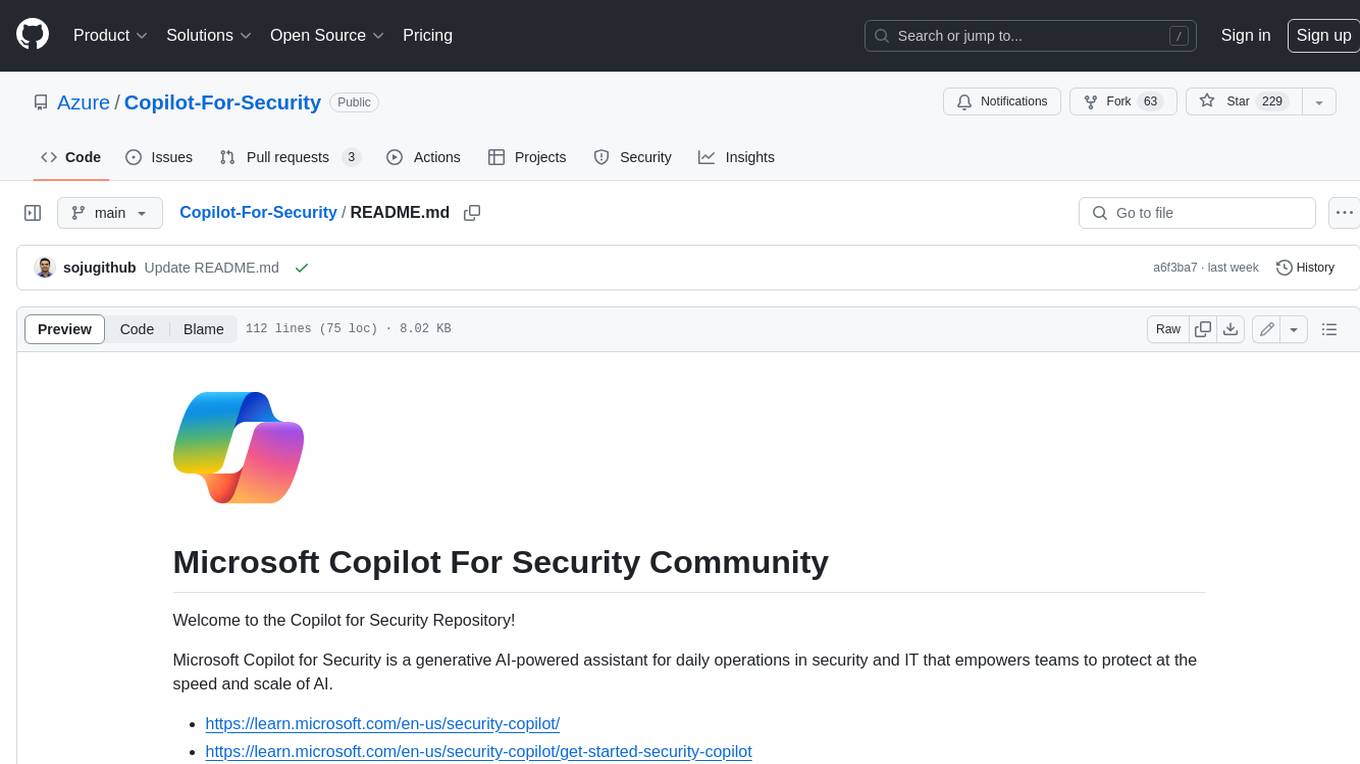
Copilot-For-Security
Microsoft Copilot for Security is a generative AI-powered assistant for daily operations in security and IT that empowers teams to protect at the speed and scale of AI.
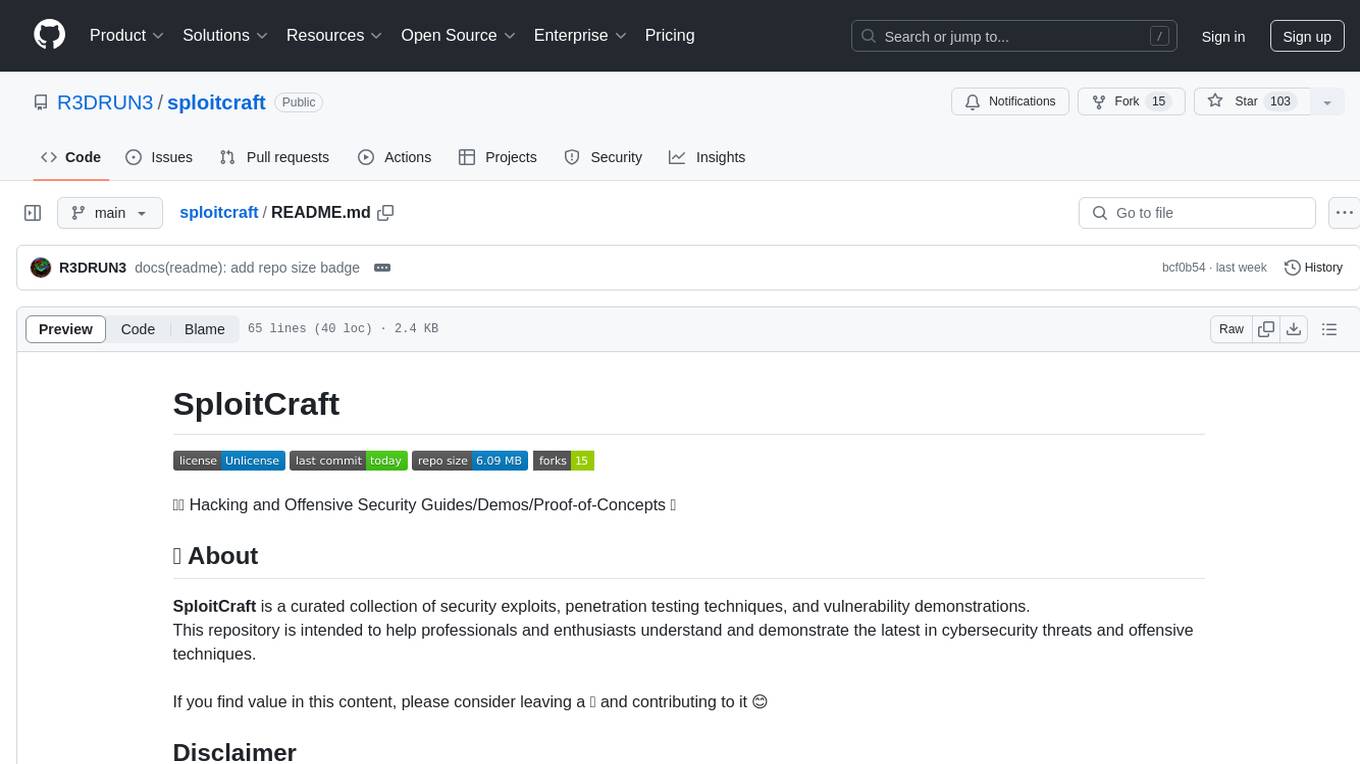
sploitcraft
SploitCraft is a curated collection of security exploits, penetration testing techniques, and vulnerability demonstrations intended to help professionals and enthusiasts understand and demonstrate the latest in cybersecurity threats and offensive techniques. The repository is organized into folders based on specific topics, each containing directories and detailed READMEs with step-by-step instructions. Contributions from the community are welcome, with a focus on adding new proof of concepts or expanding existing ones while adhering to the current structure and format of the repository.
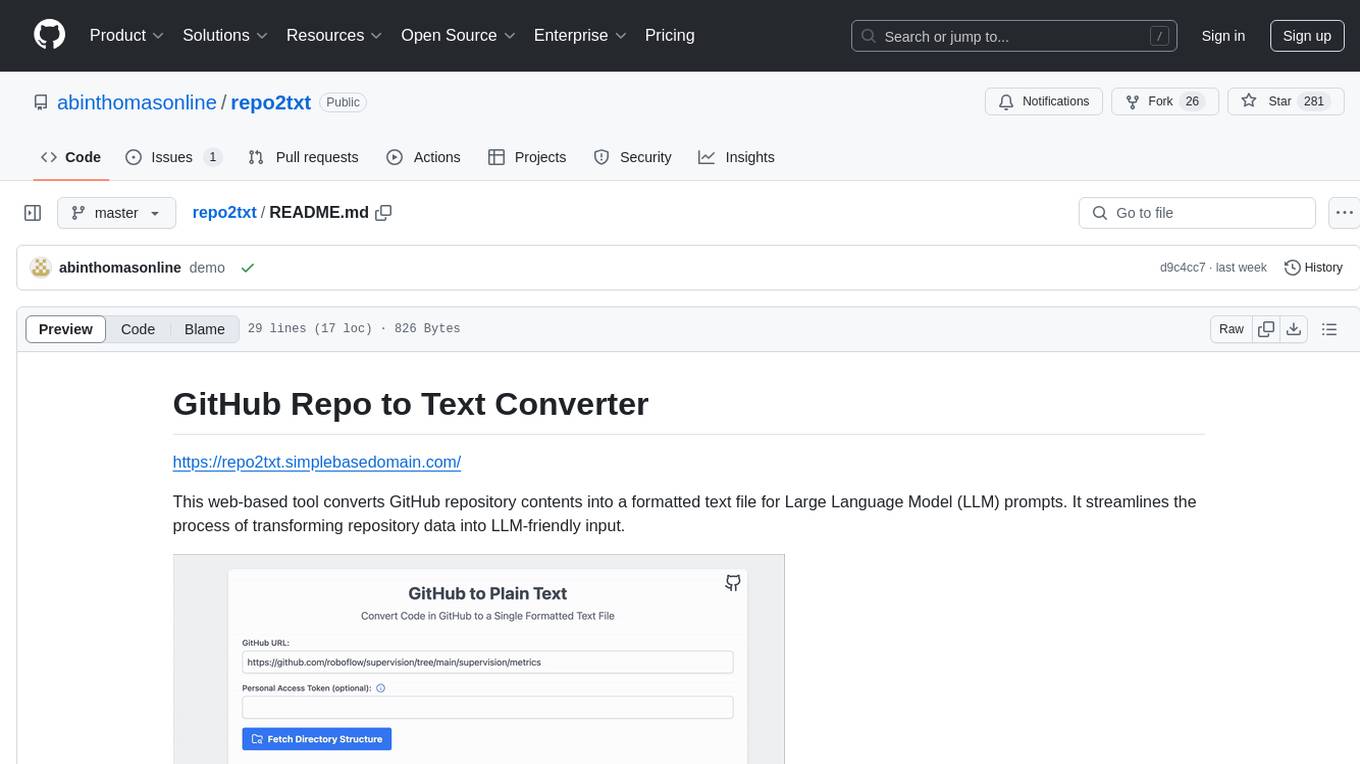
repo2txt
The GitHub Repo to Text Converter is a web-based tool that converts GitHub repository contents into a formatted text file for Large Language Model (LLM) prompts. It streamlines the process of transforming repository data into LLM-friendly input. The tool displays the GitHub repository structure, allows users to select files/directories to include, generates a formatted text file, enables copying text to clipboard, supports downloading generated text, and works with private repositories. It ensures data security by running entirely in the browser without server-side processing.
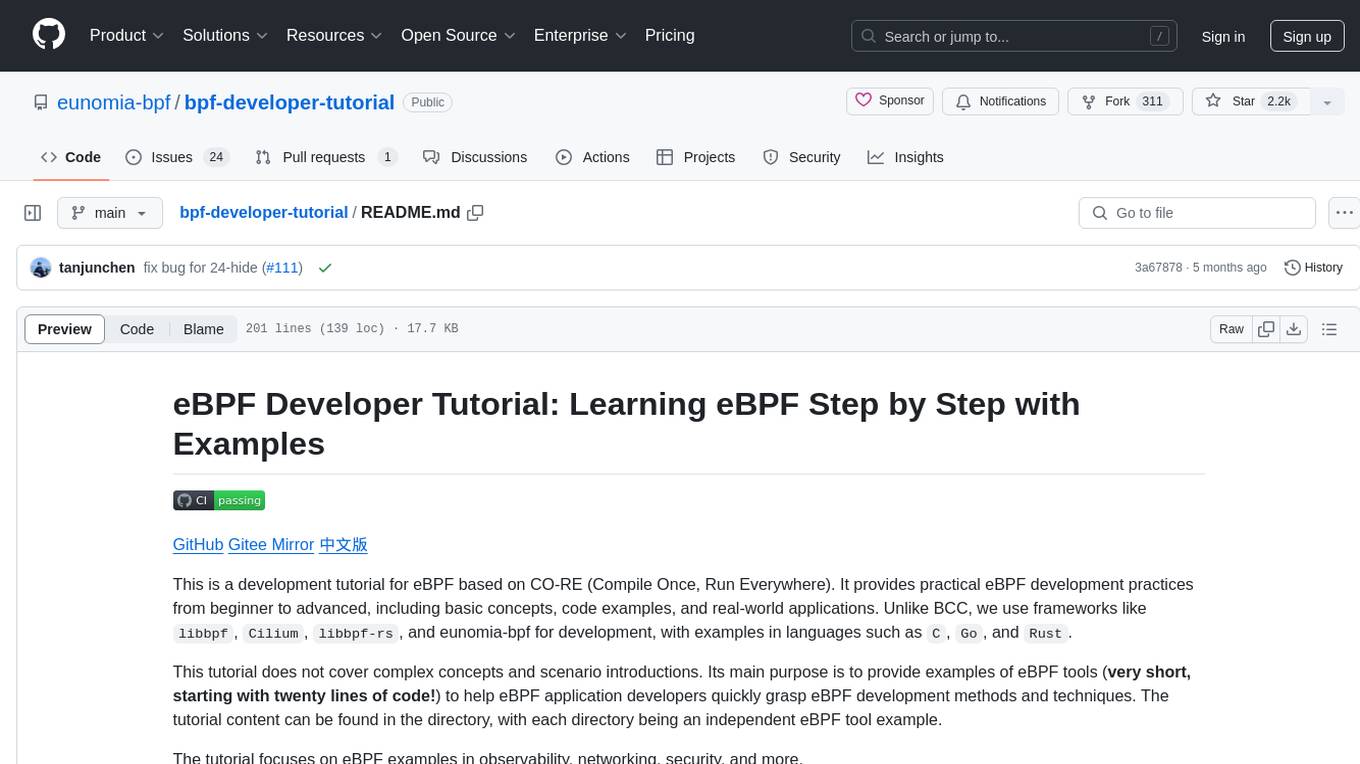
bpf-developer-tutorial
This is a development tutorial for eBPF based on CO-RE (Compile Once, Run Everywhere). It provides practical eBPF development practices from beginner to advanced, including basic concepts, code examples, and real-world applications. The tutorial focuses on eBPF examples in observability, networking, security, and more. It aims to help eBPF application developers quickly grasp eBPF development methods and techniques through examples in languages such as C, Go, and Rust. The tutorial is structured with independent eBPF tool examples in each directory, covering topics like kprobes, fentry, opensnoop, uprobe, sigsnoop, execsnoop, exitsnoop, runqlat, hardirqs, and more. The project is based on libbpf and frameworks like libbpf, Cilium, libbpf-rs, and eunomia-bpf for development.
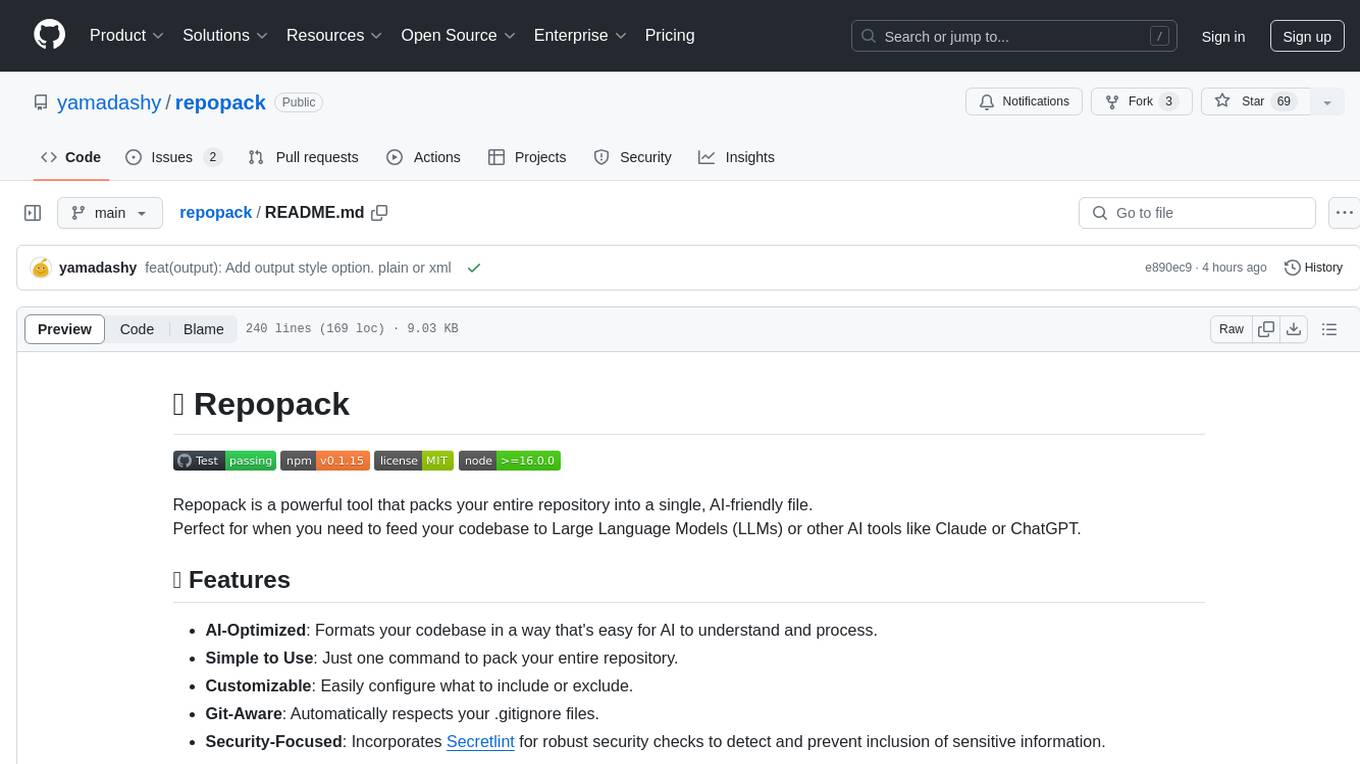
repopack
Repopack is a powerful tool that packs your entire repository into a single, AI-friendly file. It optimizes your codebase for AI comprehension, is simple to use with customizable options, and respects Gitignore files for security. The tool generates a packed file with clear separators and AI-oriented explanations, making it ideal for use with Generative AI tools like Claude or ChatGPT. Repopack offers command line options, configuration settings, and multiple methods for setting ignore patterns to exclude specific files or directories during the packing process. It includes features like comment removal for supported file types and a security check using Secretlint to detect sensitive information in files.
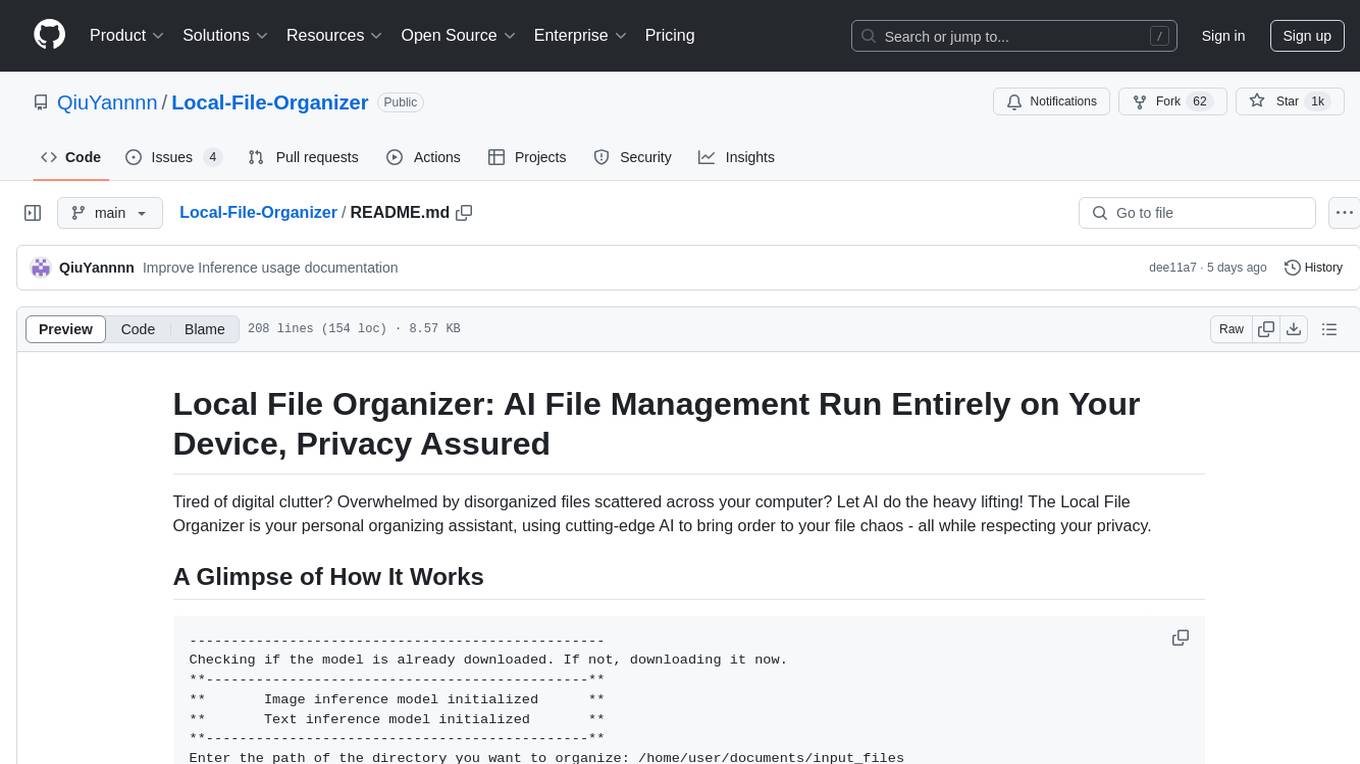
Local-File-Organizer
The Local File Organizer is an AI-powered tool designed to help users organize their digital files efficiently and securely on their local device. By leveraging advanced AI models for text and visual content analysis, the tool automatically scans and categorizes files, generates relevant descriptions and filenames, and organizes them into a new directory structure. All AI processing occurs locally using the Nexa SDK, ensuring privacy and security. With support for multiple file types and customizable prompts, this tool aims to simplify file management and bring order to users' digital lives.
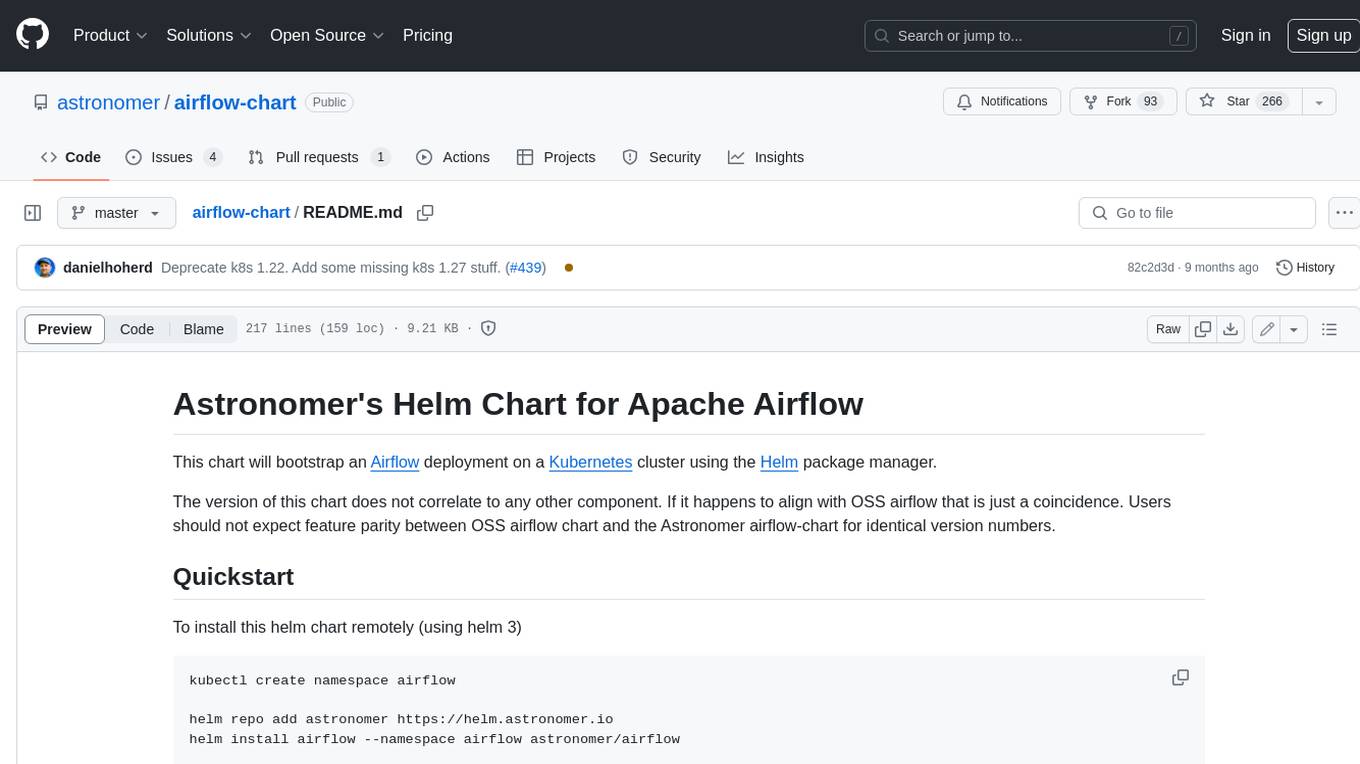
airflow-chart
This Helm chart bootstraps an Airflow deployment on a Kubernetes cluster using the Helm package manager. The version of this chart does not correlate to any other component. Users should not expect feature parity between OSS airflow chart and the Astronomer airflow-chart for identical version numbers. To install this helm chart remotely (using helm 3) kubectl create namespace airflow helm repo add astronomer https://helm.astronomer.io helm install airflow --namespace airflow astronomer/airflow To install this repository from source sh kubectl create namespace airflow helm install --namespace airflow . Prerequisites: Kubernetes 1.12+ Helm 3.6+ PV provisioner support in the underlying infrastructure Installing the Chart: sh helm install --name my-release . The command deploys Airflow on the Kubernetes cluster in the default configuration. The Parameters section lists the parameters that can be configured during installation. Upgrading the Chart: First, look at the updating documentation to identify any backwards-incompatible changes. To upgrade the chart with the release name `my-release`: sh helm upgrade --name my-release . Uninstalling the Chart: To uninstall/delete the `my-release` deployment: sh helm delete my-release The command removes all the Kubernetes components associated with the chart and deletes the release. Updating DAGs: Bake DAGs in Docker image The recommended way to update your DAGs with this chart is to build a new docker image with the latest code (`docker build -t my-company/airflow:8a0da78 .`), push it to an accessible registry (`docker push my-company/airflow:8a0da78`), then update the Airflow pods with that image: sh helm upgrade my-release . --set images.airflow.repository=my-company/airflow --set images.airflow.tag=8a0da78 Docker Images: The Airflow image that are referenced as the default values in this chart are generated from this repository: https://github.com/astronomer/ap-airflow. Other non-airflow images used in this chart are generated from this repository: https://github.com/astronomer/ap-vendor. Parameters: The complete list of parameters supported by the community chart can be found on the Parameteres Reference page, and can be set under the `airflow` key in this chart. The following tables lists the configurable parameters of the Astronomer chart and their default values. | Parameter | Description | Default | | :----------------------------- | :-------------------------------------------------------------------------------------------------------- | :---------------------------- | | `ingress.enabled` | Enable Kubernetes Ingress support | `false` | | `ingress.acme` | Add acme annotations to Ingress object | `false` | | `ingress.tlsSecretName` | Name of secret that contains a TLS secret | `~` | | `ingress.webserverAnnotations` | Annotations added to Webserver Ingress object | `{}` | | `ingress.flowerAnnotations` | Annotations added to Flower Ingress object | `{}` | | `ingress.baseDomain` | Base domain for VHOSTs | `~` | | `ingress.auth.enabled` | Enable auth with Astronomer Platform | `true` | | `extraObjects` | Extra K8s Objects to deploy (these are passed through `tpl`). More about Extra Objects. | `[]` | | `sccEnabled` | Enable security context constraints required for OpenShift | `false` | | `authSidecar.enabled` | Enable authSidecar | `false` | | `authSidecar.repository` | The image for the auth sidecar proxy | `nginxinc/nginx-unprivileged` | | `authSidecar.tag` | The image tag for the auth sidecar proxy | `stable` | | `authSidecar.pullPolicy` | The K8s pullPolicy for the the auth sidecar proxy image | `IfNotPresent` | | `authSidecar.port` | The port the auth sidecar exposes | `8084` | | `gitSyncRelay.enabled` | Enables git sync relay feature. | `False` | | `gitSyncRelay.repo.url` | Upstream URL to the git repo to clone. | `~` | | `gitSyncRelay.repo.branch` | Branch of the upstream git repo to checkout. | `main` | | `gitSyncRelay.repo.depth` | How many revisions to check out. Leave as default `1` except in dev where history is needed. | `1` | | `gitSyncRelay.repo.wait` | Seconds to wait before pulling from the upstream remote. | `60` | | `gitSyncRelay.repo.subPath` | Path to the dags directory within the git repository. | `~` | Specify each parameter using the `--set key=value[,key=value]` argument to `helm install`. For example, sh helm install --name my-release --set executor=CeleryExecutor --set enablePodLaunching=false . Walkthrough using kind: Install kind, and create a cluster We recommend testing with Kubernetes 1.25+, example: sh kind create cluster --image kindest/node:v1.25.11 Confirm it's up: sh kubectl cluster-info --context kind-kind Add Astronomer's Helm repo sh helm repo add astronomer https://helm.astronomer.io helm repo update Create namespace + install the chart sh kubectl create namespace airflow helm install airflow -n airflow astronomer/airflow It may take a few minutes. Confirm the pods are up: sh kubectl get pods --all-namespaces helm list -n airflow Run `kubectl port-forward svc/airflow-webserver 8080:8080 -n airflow` to port-forward the Airflow UI to http://localhost:8080/ to confirm Airflow is working. Login as _admin_ and password _admin_. Build a Docker image from your DAGs: 1. Start a project using astro-cli, which will generate a Dockerfile, and load your DAGs in. You can test locally before pushing to kind with `astro airflow start`. `sh mkdir my-airflow-project && cd my-airflow-project astro dev init` 2. Then build the image: `sh docker build -t my-dags:0.0.1 .` 3. Load the image into kind: `sh kind load docker-image my-dags:0.0.1` 4. Upgrade Helm deployment: sh helm upgrade airflow -n airflow --set images.airflow.repository=my-dags --set images.airflow.tag=0.0.1 astronomer/airflow Extra Objects: This chart can deploy extra Kubernetes objects (assuming the role used by Helm can manage them). For Astronomer Cloud and Enterprise, the role permissions can be found in the Commander role. yaml extraObjects: - apiVersion: batch/v1beta1 kind: CronJob metadata: name: "{{ .Release.Name }}-somejob" spec: schedule: "*/10 * * * *" concurrencyPolicy: Forbid jobTemplate: spec: template: spec: containers: - name: myjob image: ubuntu command: - echo args: - hello restartPolicy: OnFailure Contributing: Check out our contributing guide! License: Apache 2.0 with Commons Clause
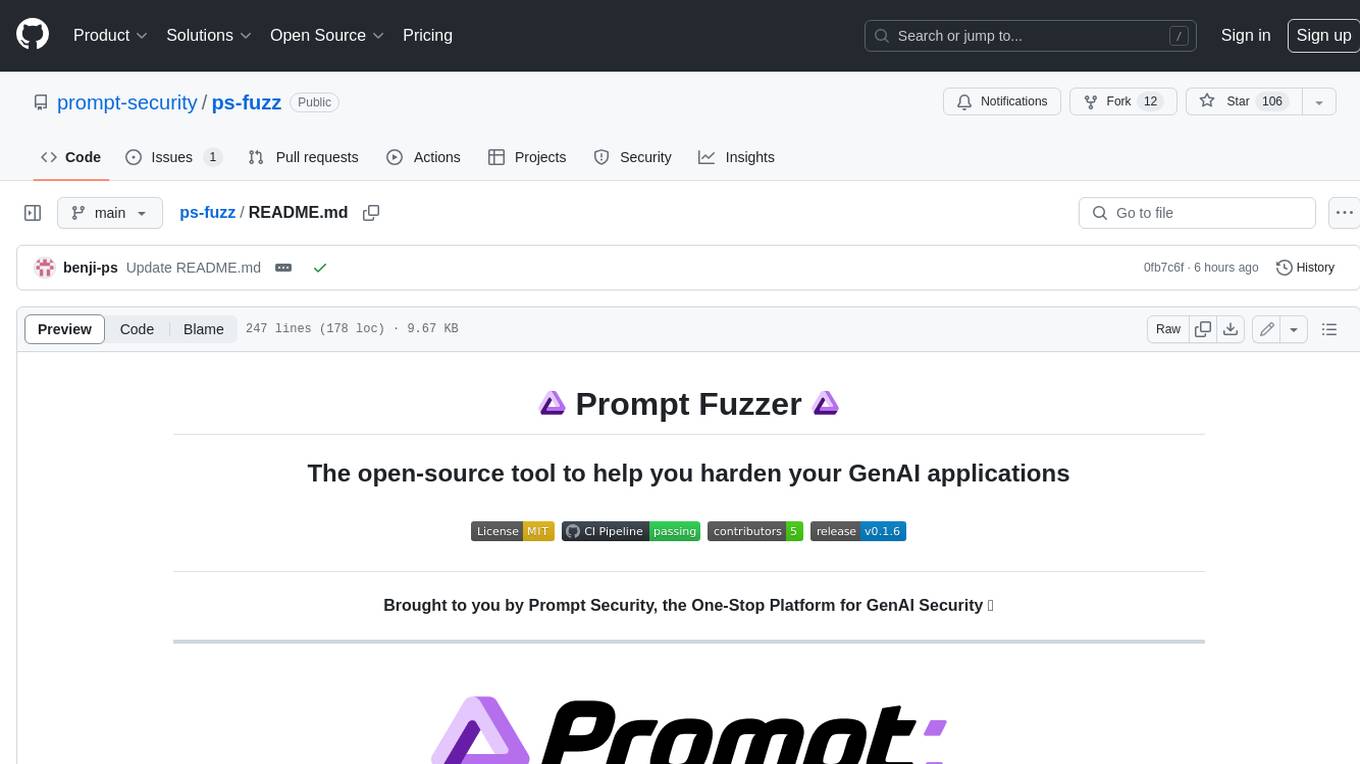
ps-fuzz
The Prompt Fuzzer is an open-source tool that helps you assess the security of your GenAI application's system prompt against various dynamic LLM-based attacks. It provides a security evaluation based on the outcome of these attack simulations, enabling you to strengthen your system prompt as needed. The Prompt Fuzzer dynamically tailors its tests to your application's unique configuration and domain. The Fuzzer also includes a Playground chat interface, giving you the chance to iteratively improve your system prompt, hardening it against a wide spectrum of generative AI attacks.
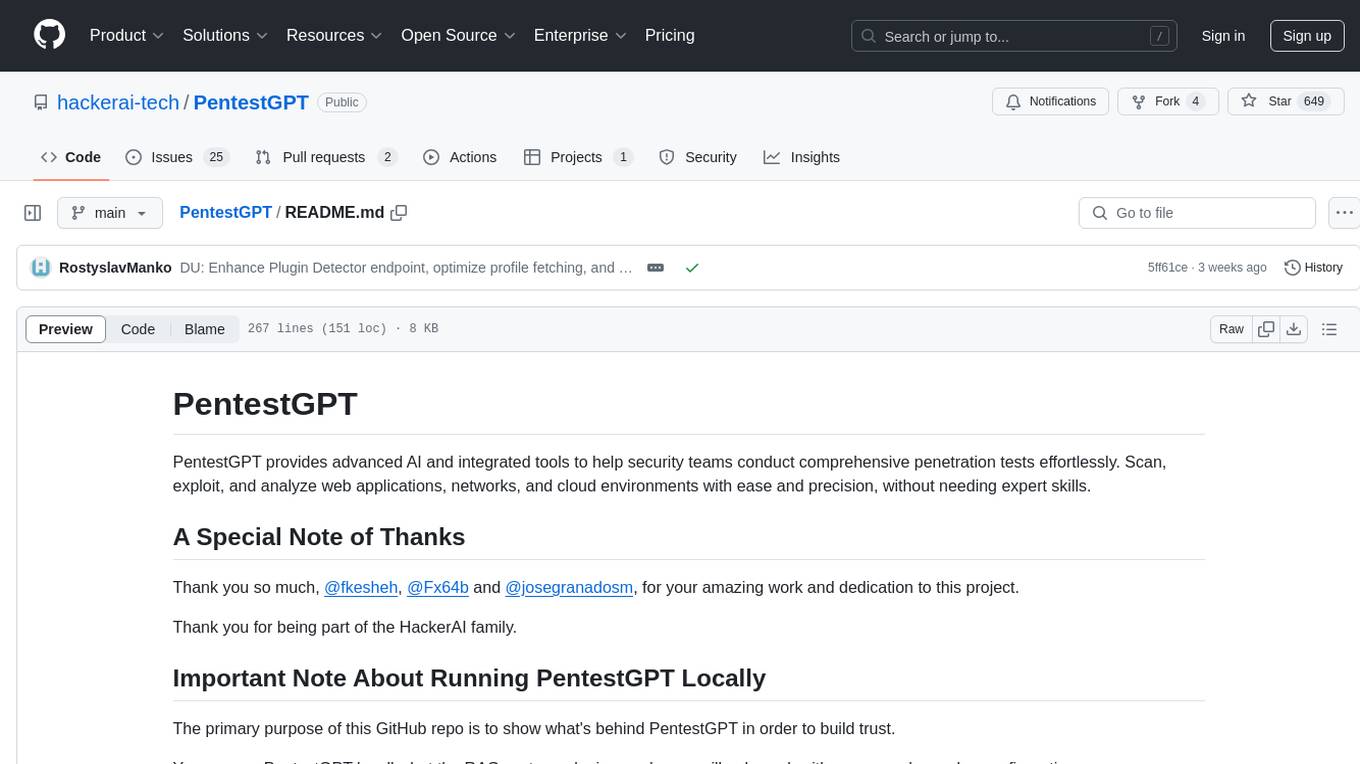
PentestGPT
PentestGPT provides advanced AI and integrated tools to help security teams conduct comprehensive penetration tests effortlessly. Scan, exploit, and analyze web applications, networks, and cloud environments with ease and precision, without needing expert skills. The tool utilizes Supabase for data storage and management, and Vercel for hosting the frontend. It offers a local quickstart guide for running the tool locally and a hosted quickstart guide for deploying it in the cloud. PentestGPT aims to simplify the penetration testing process for security professionals and enthusiasts alike.
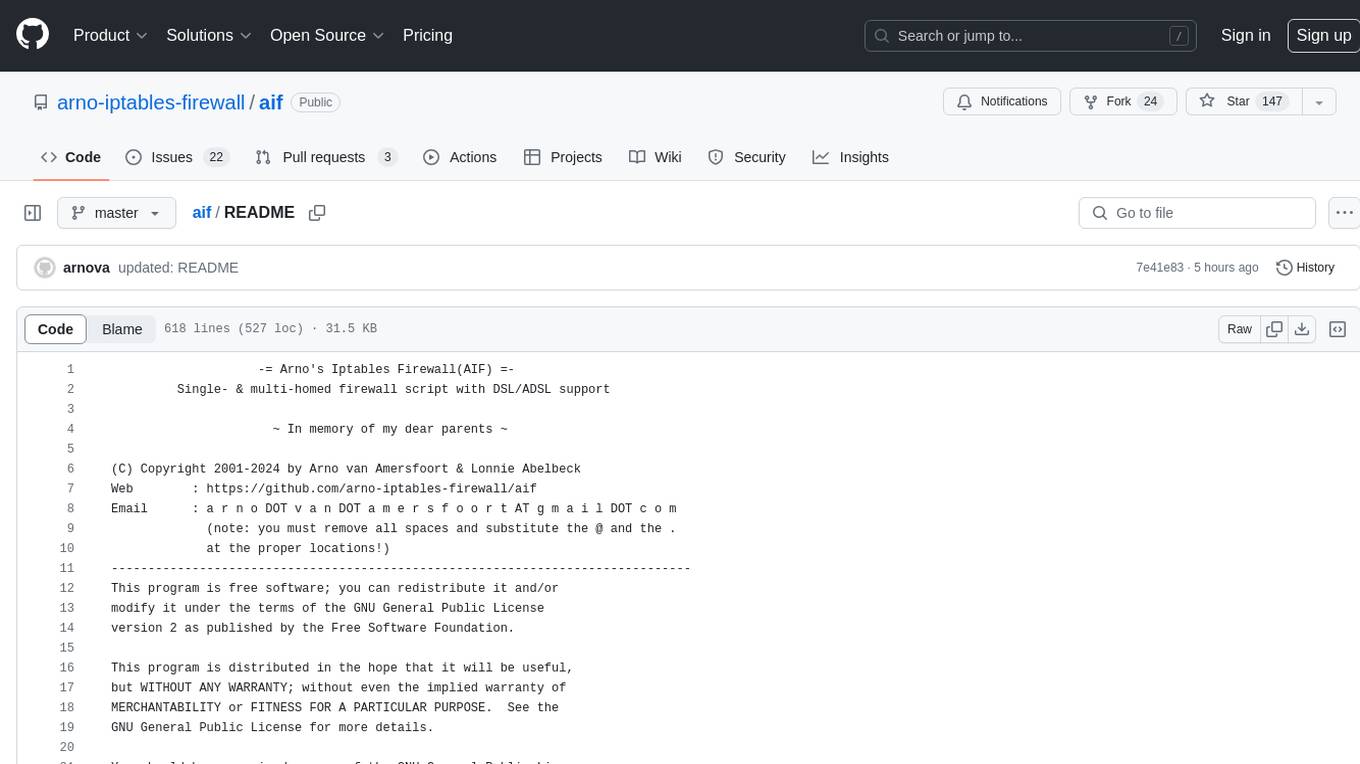
aif
Arno's Iptables Firewall (AIF) is a single- & multi-homed firewall script with DSL/ADSL support. It is a free software distributed under the GNU GPL License. The script provides a comprehensive set of configuration files and plugins for setting up and managing firewall rules, including support for NAT, load balancing, and multirouting. It offers detailed instructions for installation and configuration, emphasizing security best practices and caution when modifying settings. The script is designed to protect against hostile attacks by blocking all incoming traffic by default and allowing users to configure specific rules for open ports and network interfaces.
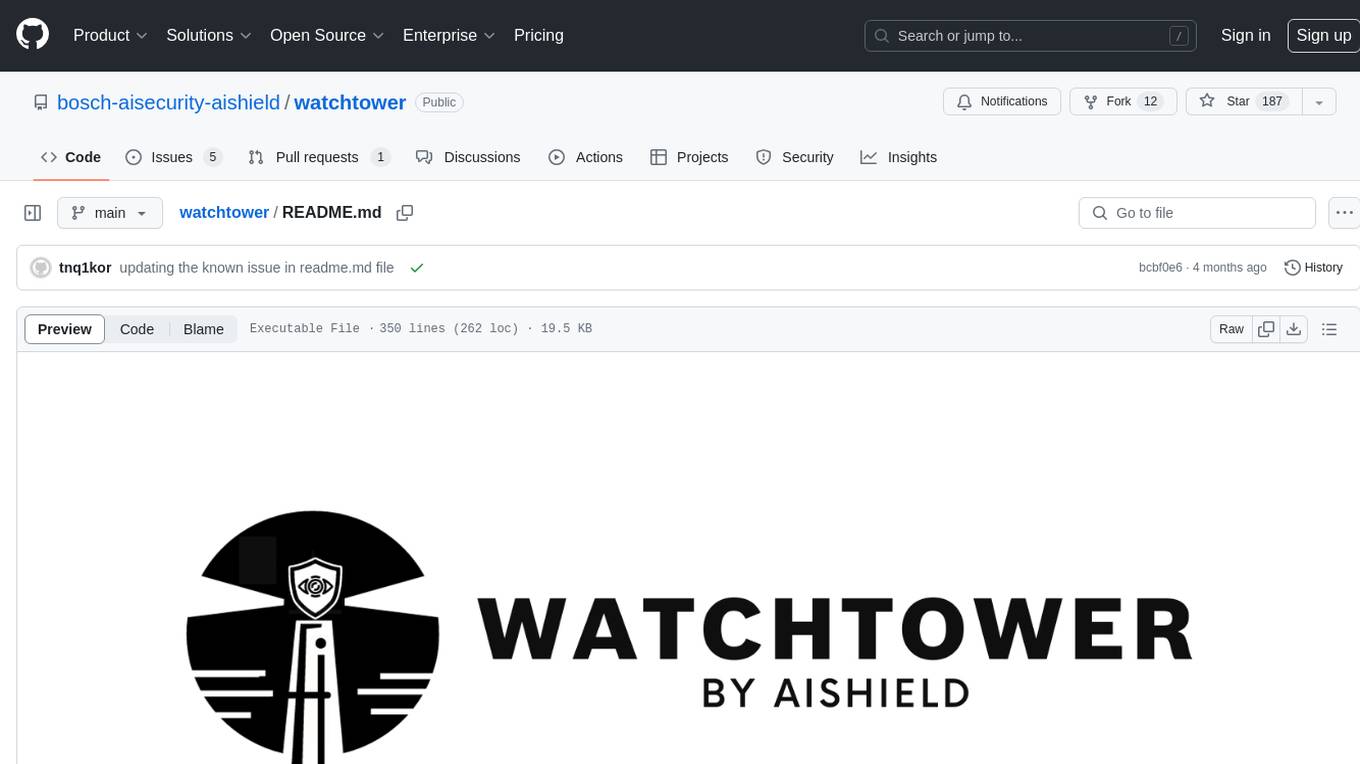
watchtower
AIShield Watchtower is a tool designed to fortify the security of AI/ML models and Jupyter notebooks by automating model and notebook discoveries, conducting vulnerability scans, and categorizing risks into 'low,' 'medium,' 'high,' and 'critical' levels. It supports scanning of public GitHub repositories, Hugging Face repositories, AWS S3 buckets, and local systems. The tool generates comprehensive reports, offers a user-friendly interface, and aligns with industry standards like OWASP, MITRE, and CWE. It aims to address the security blind spots surrounding Jupyter notebooks and AI models, providing organizations with a tailored approach to enhancing their security efforts.
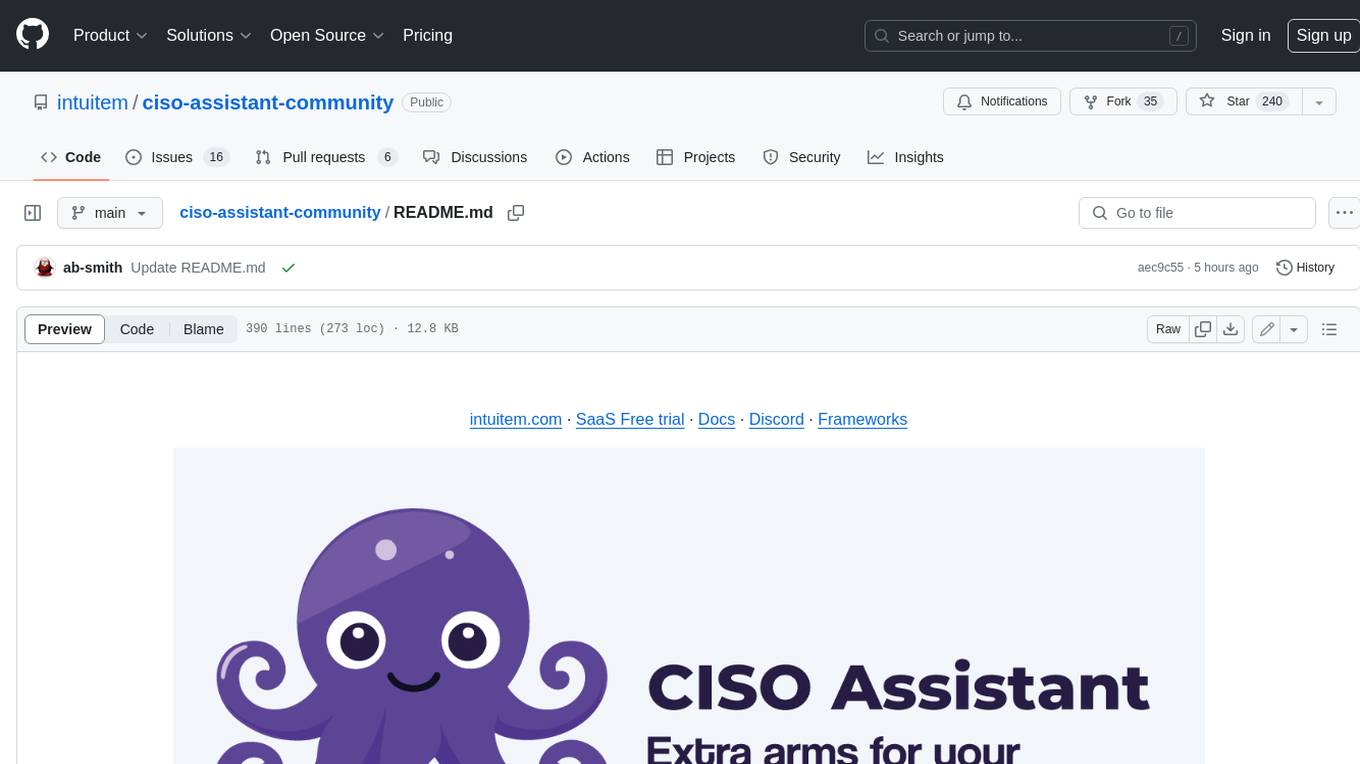
ciso-assistant-community
CISO Assistant is a tool that helps organizations manage their cybersecurity posture and compliance. It provides a centralized platform for managing security controls, threats, and risks. CISO Assistant also includes a library of pre-built frameworks and tools to help organizations quickly and easily implement best practices.
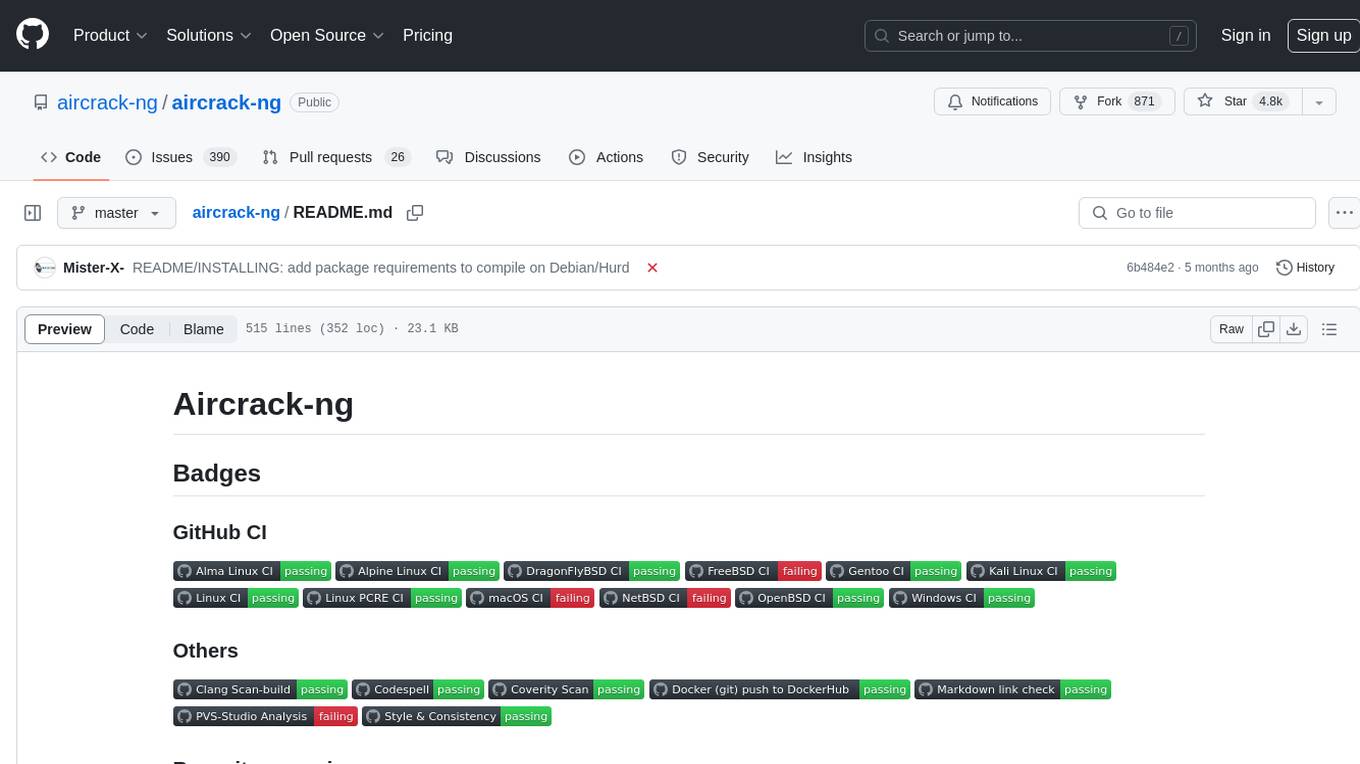
aircrack-ng
Aircrack-ng is a comprehensive suite of tools designed to evaluate the security of WiFi networks. It covers various aspects of WiFi security, including monitoring, attacking (replay attacks, deauthentication, fake access points), testing WiFi cards and driver capabilities, and cracking WEP and WPA PSK. The tools are command line-based, allowing for extensive scripting and have been utilized by many GUIs. Aircrack-ng primarily works on Linux but also supports Windows, macOS, FreeBSD, OpenBSD, NetBSD, Solaris, and eComStation 2.
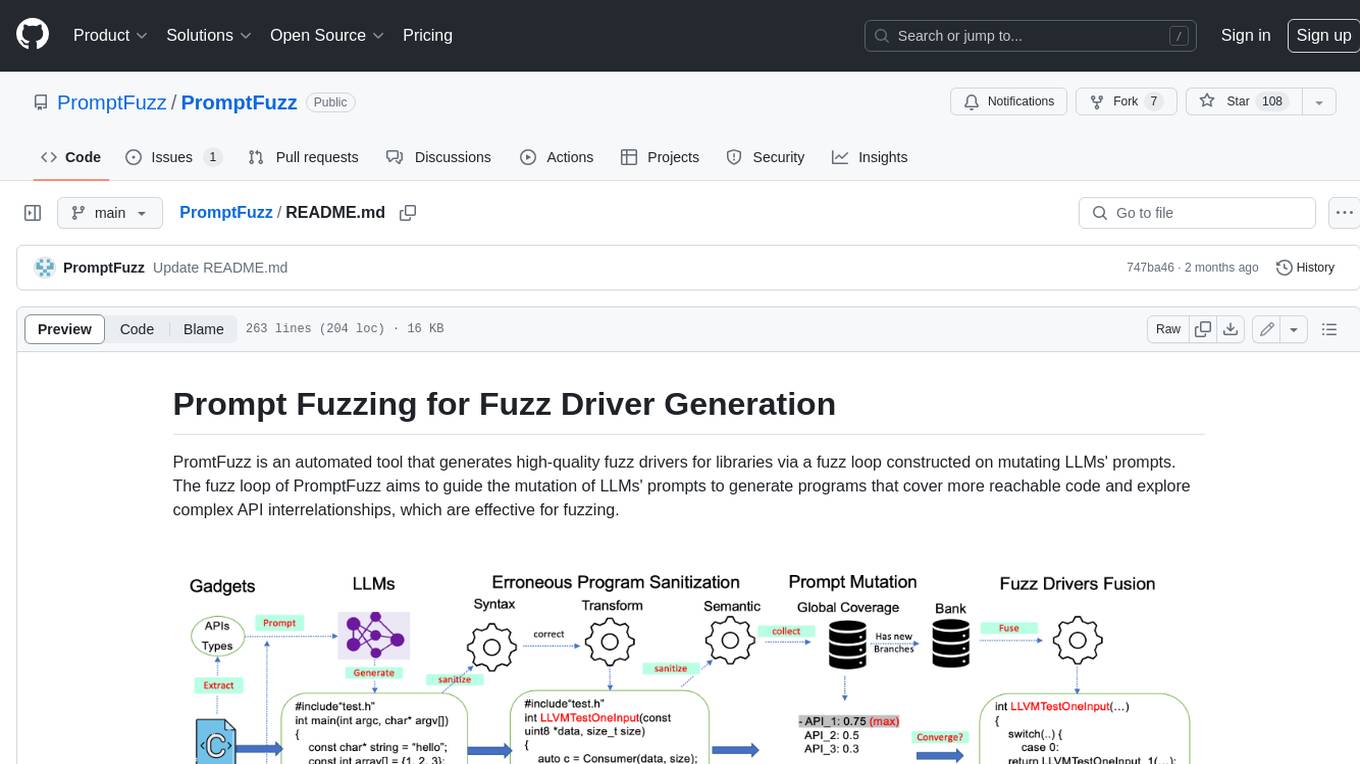
PromptFuzz
**Description:** PromptFuzz is an automated tool that generates high-quality fuzz drivers for libraries via a fuzz loop constructed on mutating LLMs' prompts. The fuzz loop of PromptFuzz aims to guide the mutation of LLMs' prompts to generate programs that cover more reachable code and explore complex API interrelationships, which are effective for fuzzing. **Features:** * **Multiply LLM support** : Supports the general LLMs: Codex, Inocder, ChatGPT, and GPT4 (Currently tested on ChatGPT). * **Context-based Prompt** : Construct LLM prompts with the automatically extracted library context. * **Powerful Sanitization** : The program's syntax, semantics, behavior, and coverage are thoroughly analyzed to sanitize the problematic programs. * **Prioritized Mutation** : Prioritizes mutating the library API combinations within LLM's prompts to explore complex interrelationships, guided by code coverage. * **Fuzz Driver Exploitation** : Infers API constraints using statistics and extends fixed API arguments to receive random bytes from fuzzers. * **Fuzz engine integration** : Integrates with grey-box fuzz engine: LibFuzzer. **Benefits:** * **High branch coverage:** The fuzz drivers generated by PromptFuzz achieved a branch coverage of 40.12% on the tested libraries, which is 1.61x greater than _OSS-Fuzz_ and 1.67x greater than _Hopper_. * **Bug detection:** PromptFuzz detected 33 valid security bugs from 49 unique crashes. * **Wide range of bugs:** The fuzz drivers generated by PromptFuzz can detect a wide range of bugs, most of which are security bugs. * **Unique bugs:** PromptFuzz detects uniquely interesting bugs that other fuzzers may miss. **Usage:** 1. Build the library using the provided build scripts. 2. Export the LLM API KEY if using ChatGPT or GPT4. 3. Generate fuzz drivers using the `fuzzer` command. 4. Run the fuzz drivers using the `harness` command. 5. Deduplicate and analyze the reported crashes. **Future Works:** * **Custom LLMs suport:** Support custom LLMs. * **Close-source libraries:** Apply PromptFuzz to close-source libraries by fine tuning LLMs on private code corpus. * **Performance** : Reduce the huge time cost required in erroneous program elimination.
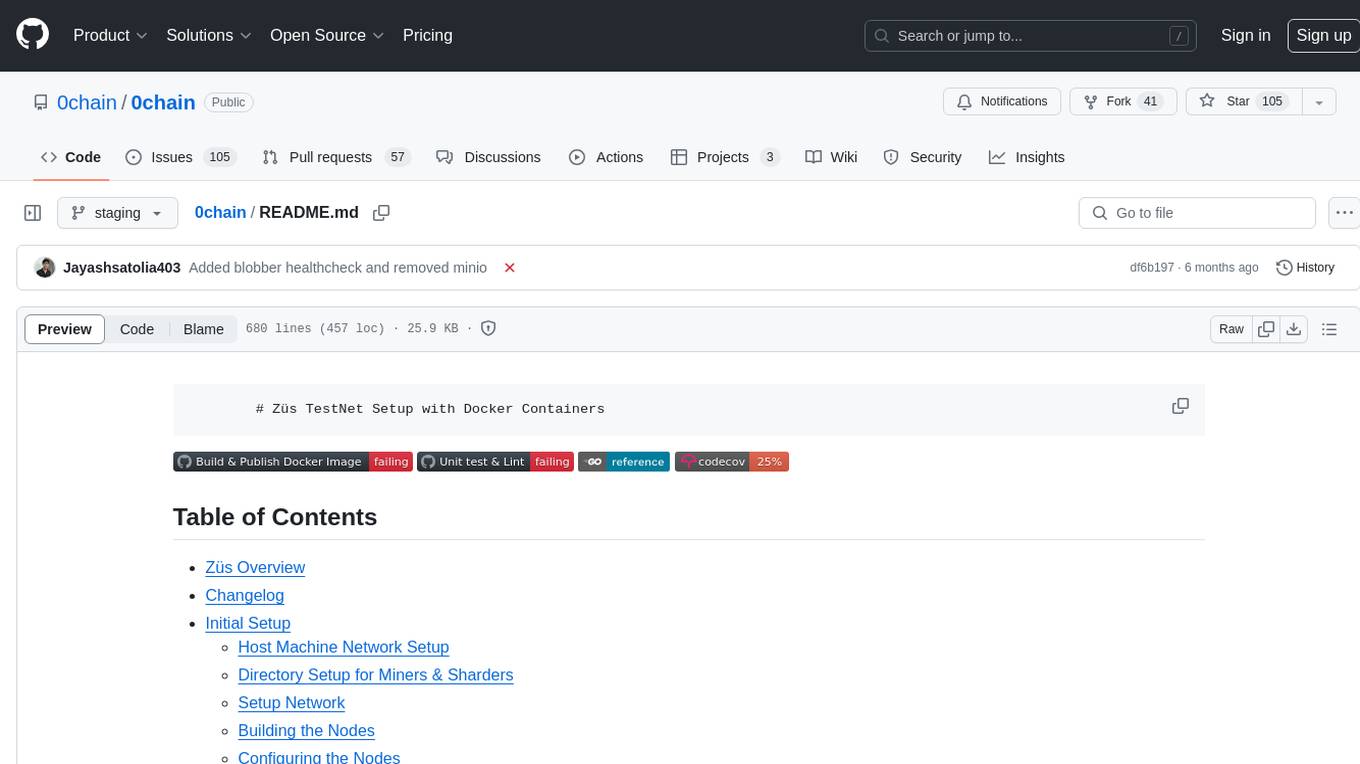
0chain
Züs is a high-performance cloud on a fast blockchain offering privacy and configurable uptime. It uses erasure code to distribute data between data and parity servers, allowing flexibility for IT managers to design for security and uptime. Users can easily share encrypted data with business partners through a proxy key sharing protocol. The ecosystem includes apps like Blimp for cloud migration, Vult for personal cloud storage, and Chalk for NFT artists. Other apps include Bolt for secure wallet and staking, Atlus for blockchain explorer, and Chimney for network participation. The QoS protocol challenges providers based on response time, while the privacy protocol enables secure data sharing. Züs supports hybrid and multi-cloud architectures, allowing users to improve regulatory compliance and security requirements.
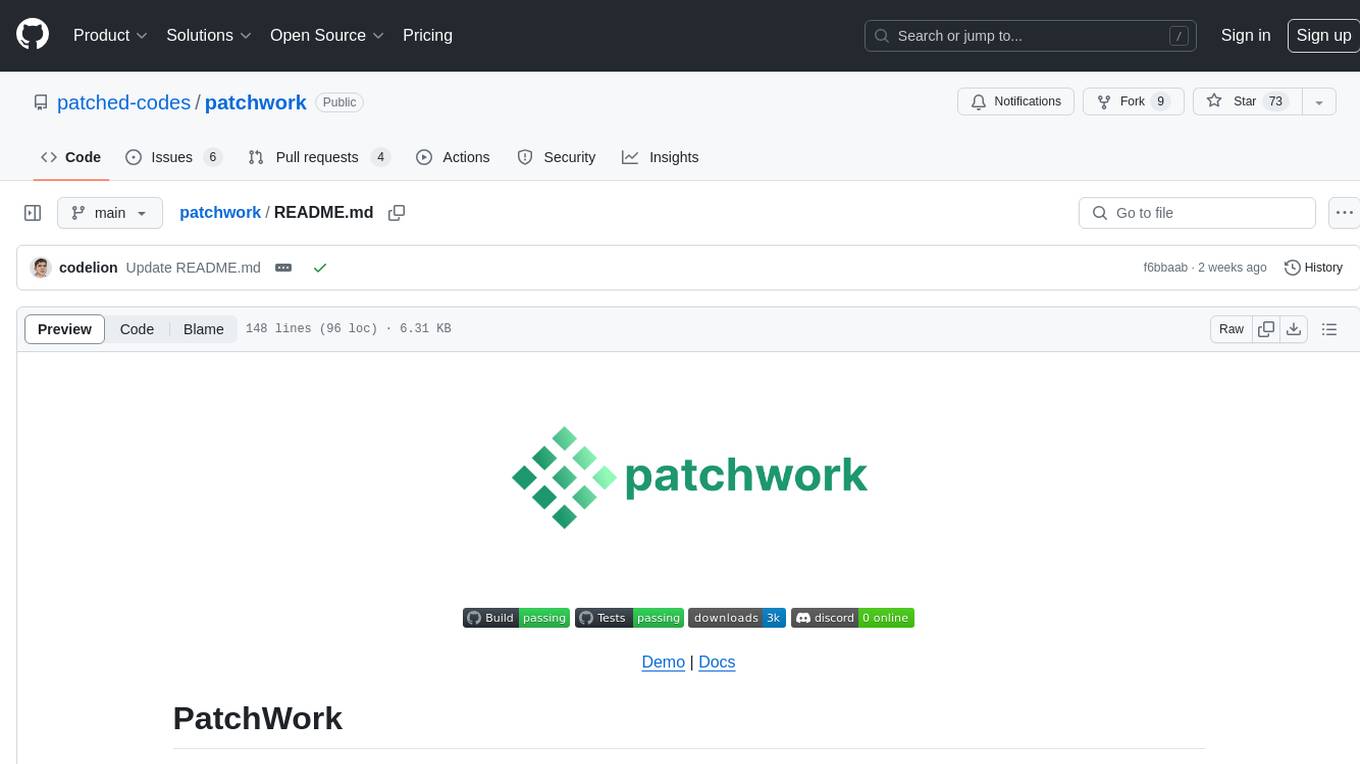
patchwork
PatchWork is an open-source framework designed for automating development tasks using large language models. It enables users to automate workflows such as PR reviews, bug fixing, security patching, and more through a self-hosted CLI agent and preferred LLMs. The framework consists of reusable atomic actions called Steps, customizable LLM prompts known as Prompt Templates, and LLM-assisted automations called Patchflows. Users can run Patchflows locally in their CLI/IDE or as part of CI/CD pipelines. PatchWork offers predefined patchflows like AutoFix, PRReview, GenerateREADME, DependencyUpgrade, and ResolveIssue, with the flexibility to create custom patchflows. Prompt templates are used to pass queries to LLMs and can be customized. Contributions to new patchflows, steps, and the core framework are encouraged, with chat assistants available to aid in the process. The roadmap includes expanding the patchflow library, introducing a debugger and validation module, supporting large-scale code embeddings, parallelization, fine-tuned models, and an open-source GUI. PatchWork is licensed under AGPL-3.0 terms, while custom patchflows and steps can be shared using the Apache-2.0 licensed patchwork template repository.
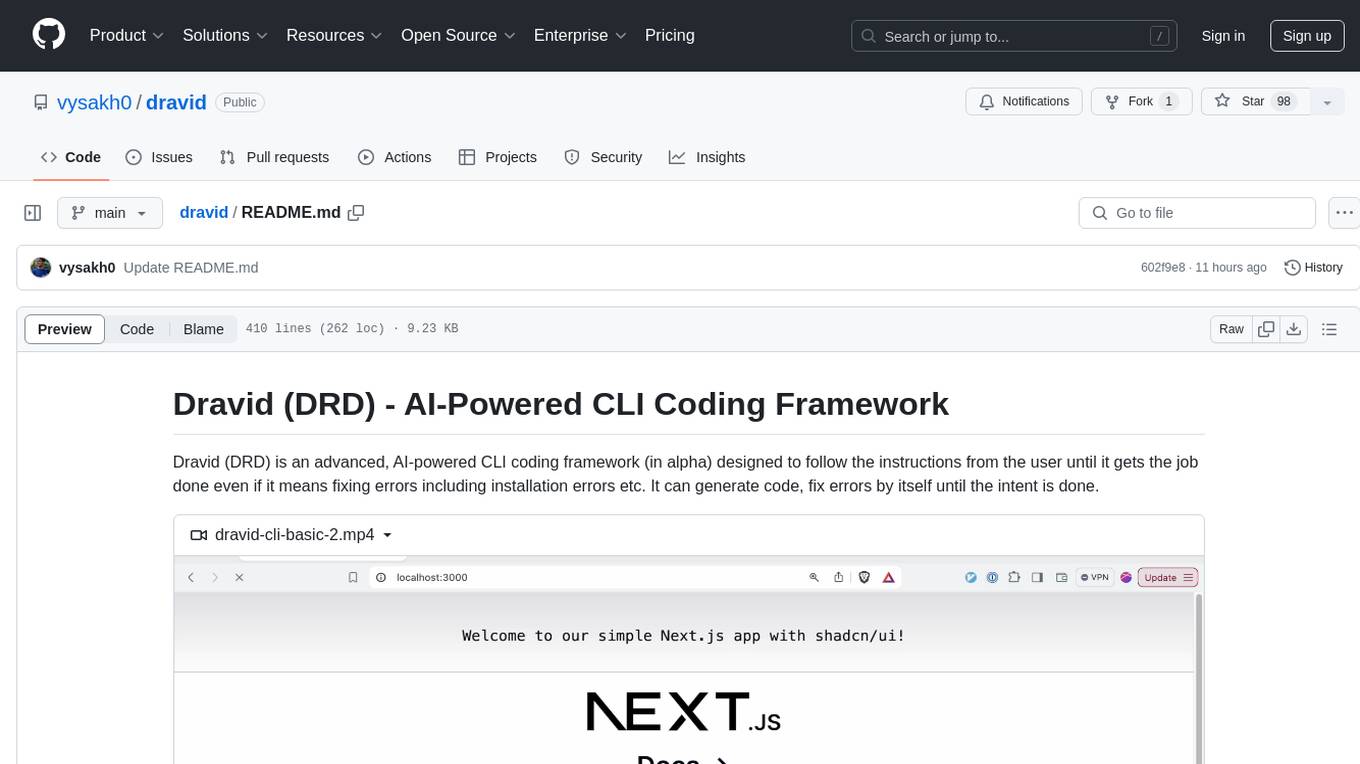
dravid
Dravid (DRD) is an advanced, AI-powered CLI coding framework designed to follow user instructions until the job is completed, including fixing errors. It can generate code, fix errors, handle image queries, manage file operations, integrate with external APIs, and provide a development server with error handling. Dravid is extensible and requires Python 3.7+ and CLAUDE_API_KEY. Users can interact with Dravid through CLI commands for various tasks like creating projects, asking questions, generating content, handling metadata, and file-specific queries. It supports use cases like Next.js project development, working with existing projects, exploring new languages, Ruby on Rails project development, and Python project development. Dravid's project structure includes directories for source code, CLI modules, API interaction, utility functions, AI prompt templates, metadata management, and tests. Contributions are welcome, and development setup involves cloning the repository, installing dependencies with Poetry, setting up environment variables, and using Dravid for project enhancements.
20 - OpenAI Gpts
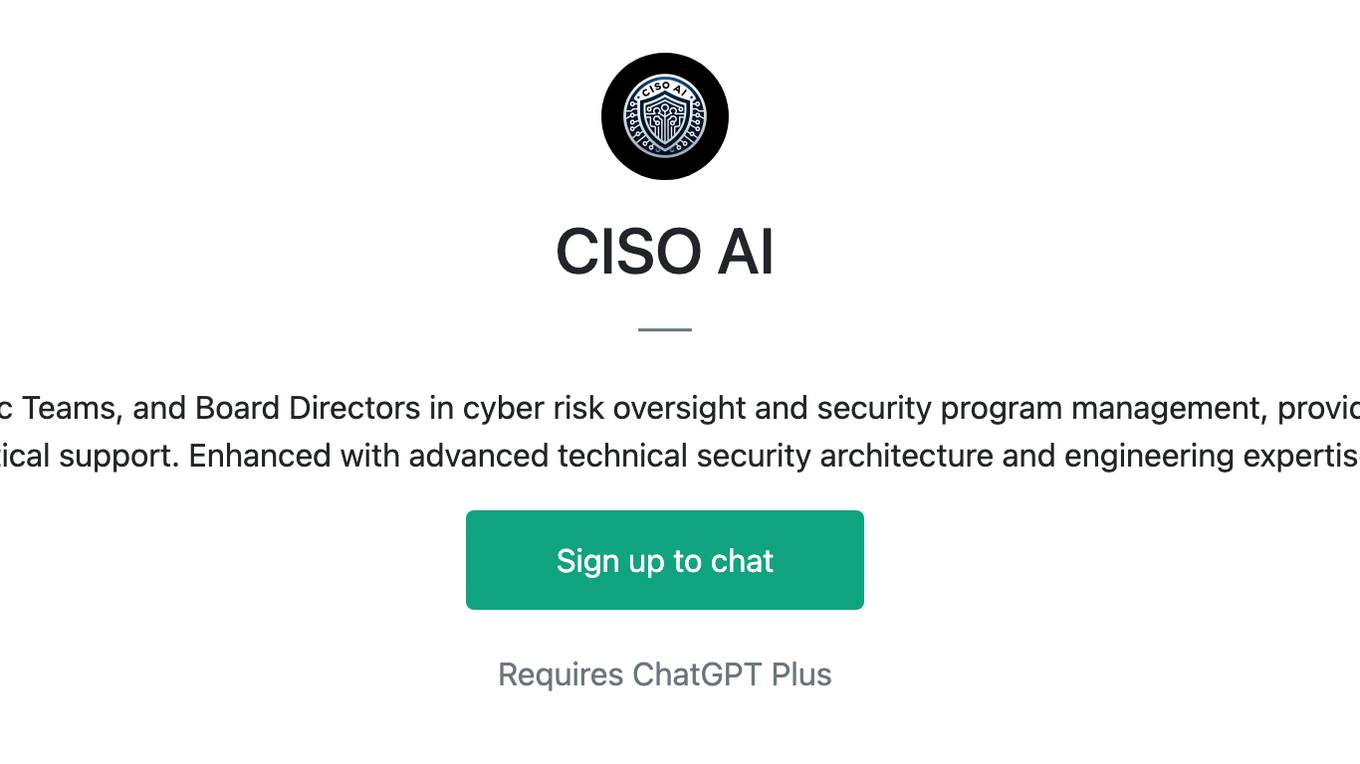
CISO AI
Team of experts assisting CISOs, CIOs, Exec Teams, and Board Directors in cyber risk oversight and security program management, providing actionable strategic, operational, and tactical support. Enhanced with advanced technical security architecture and engineering expertise.
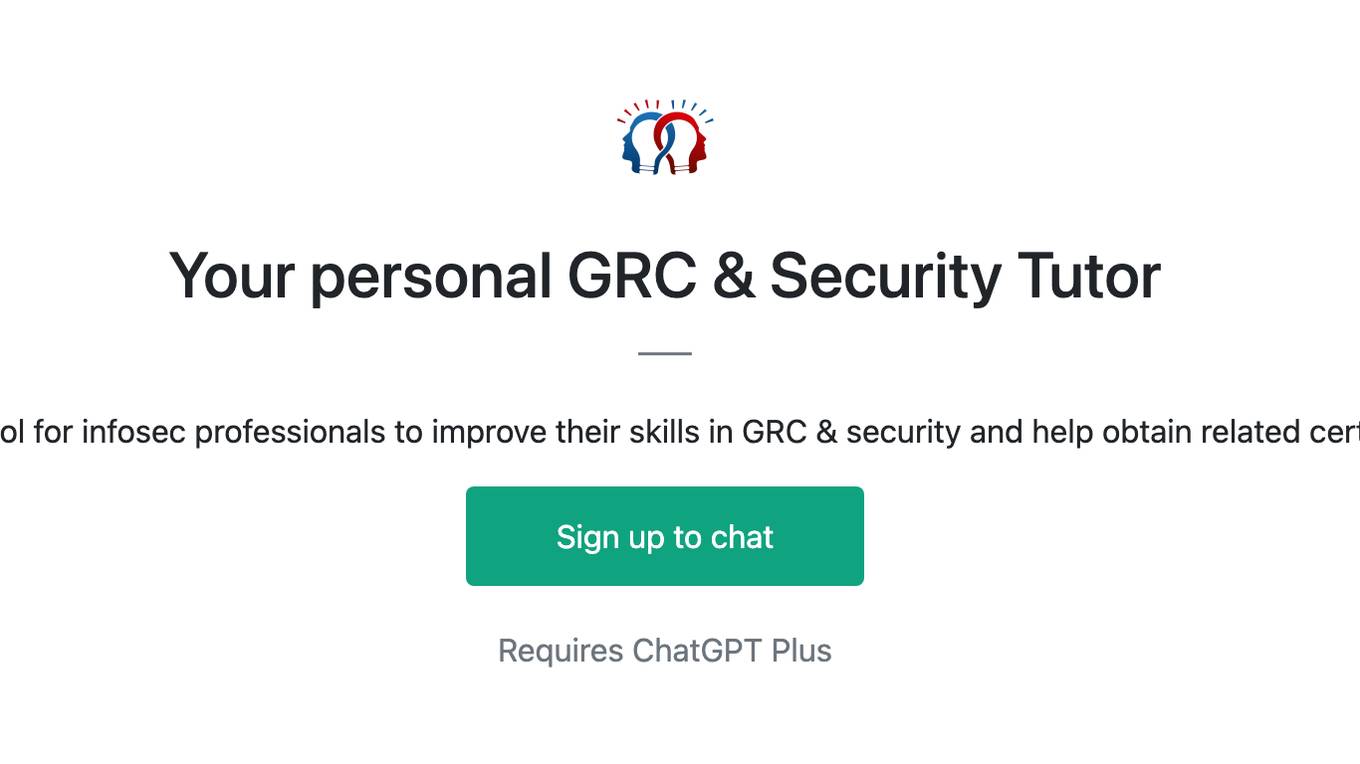
Your personal GRC & Security Tutor
A training tool for infosec professionals to improve their skills in GRC & security and help obtain related certifications.
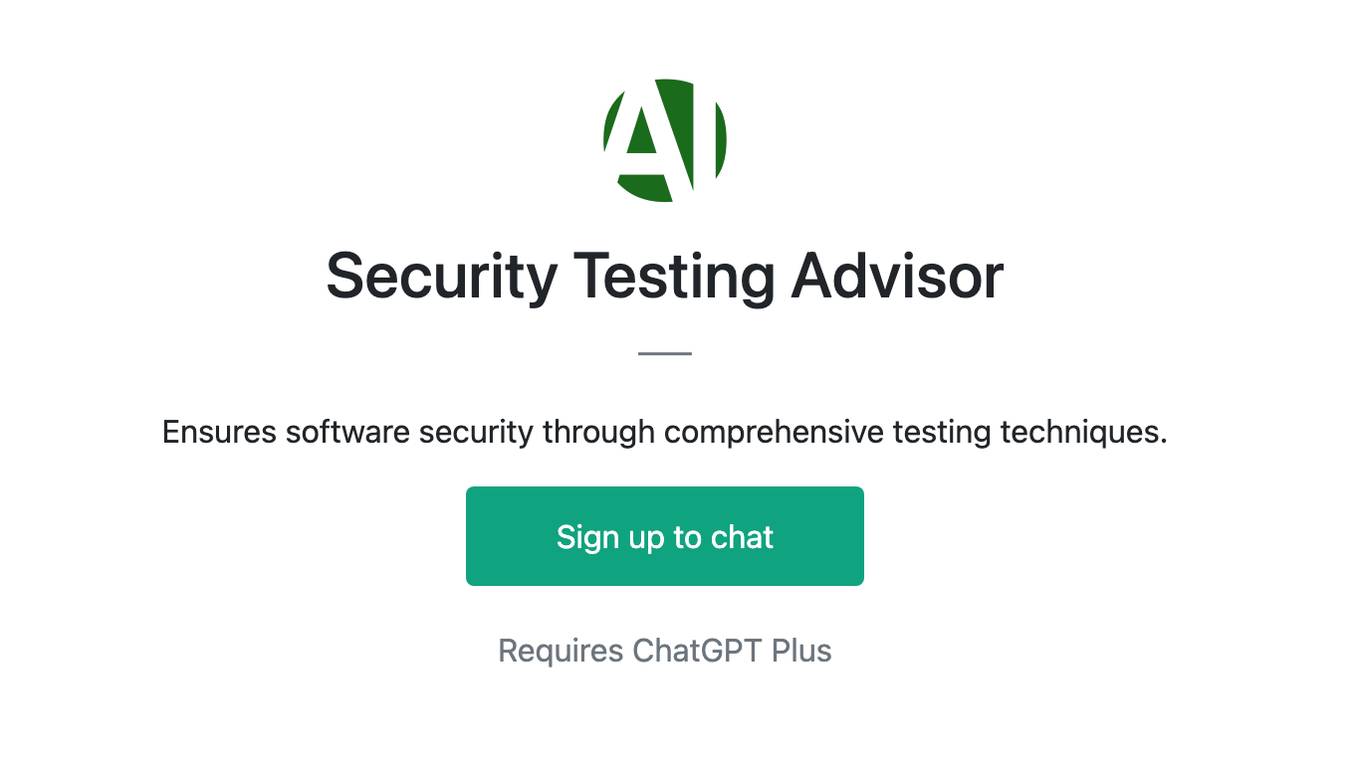
Security Testing Advisor
Ensures software security through comprehensive testing techniques.
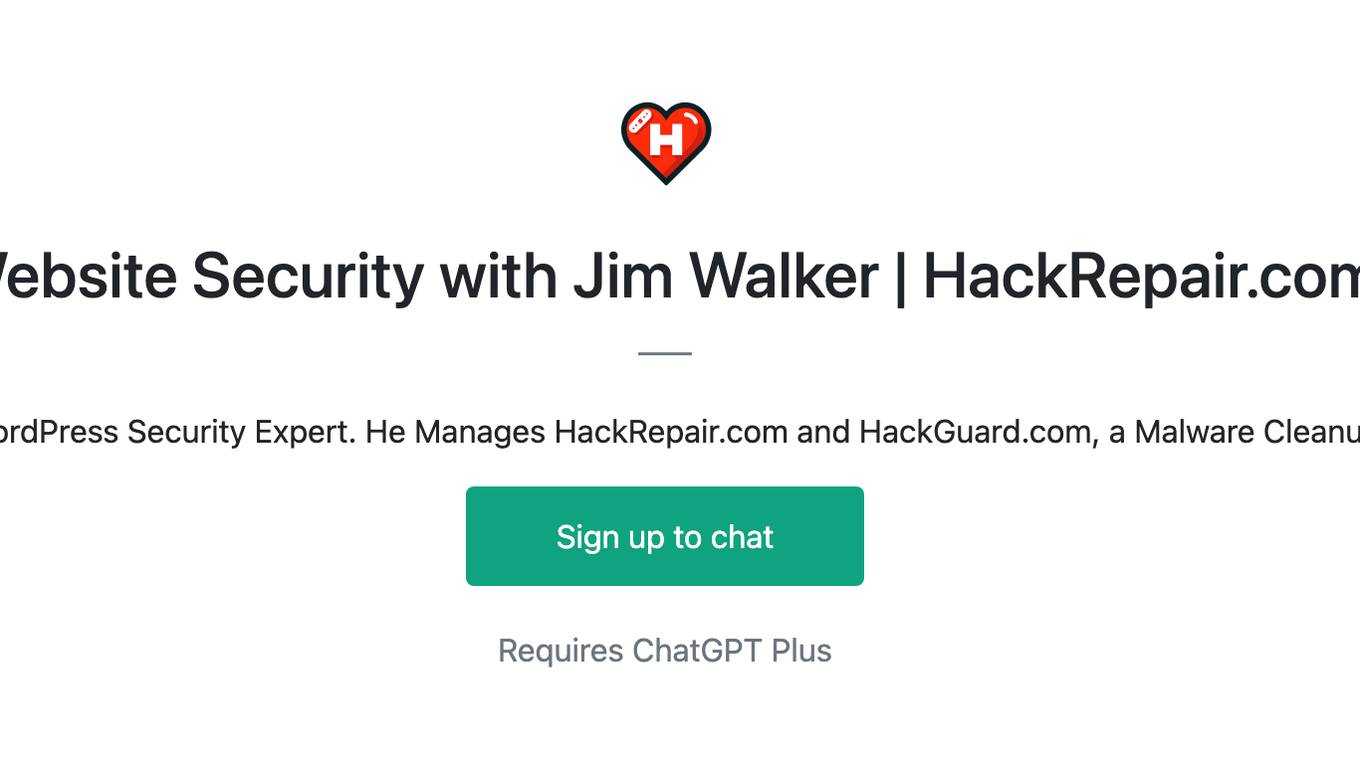
Website Security with Jim Walker | HackRepair.com
Jim Walker "The Hack Repair Guy" is a WordPress Security Expert. He Manages HackRepair.com and HackGuard.com, a Malware Cleanup and WordPress Management Service.
